 Ronald Aug . March 20
Ronald Aug . March 20
Scriptwriting And Storytelling Techniques

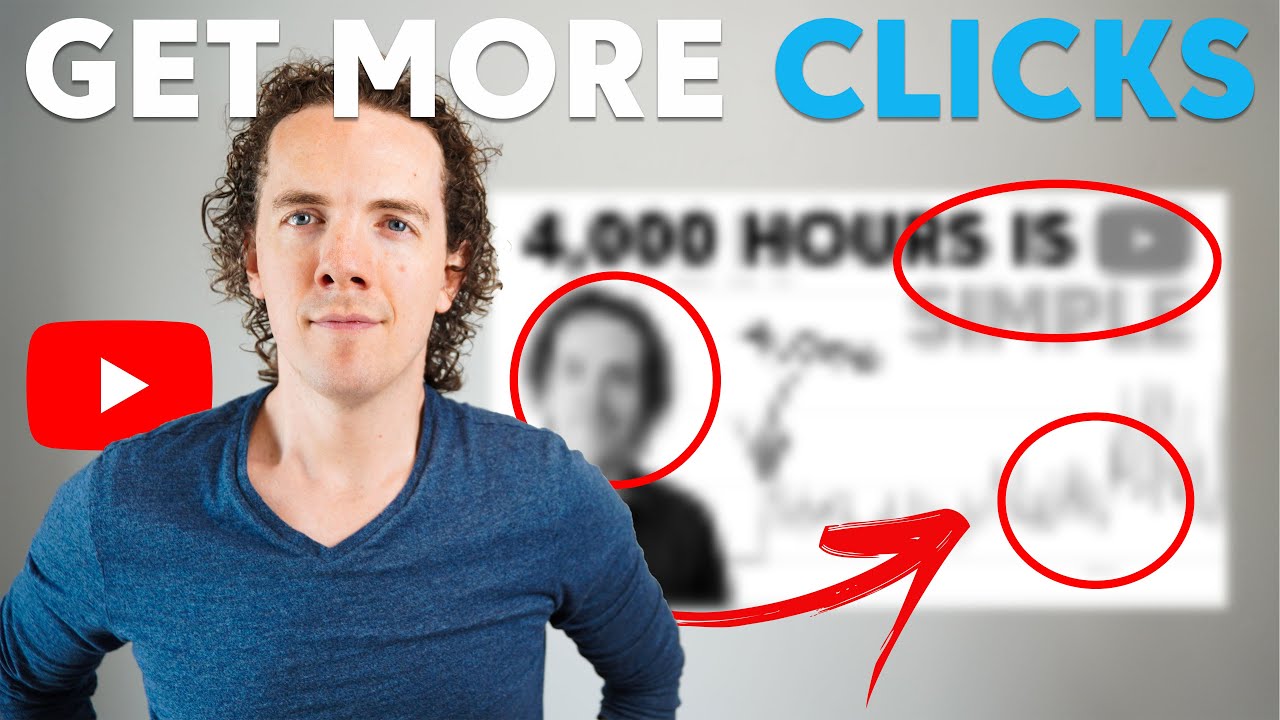 Channel Makers
Channel Makers
The Art of Storytelling in YouTube Videos
Serendipitous browsing of YouTube might lead you down an entertaining rabbit hole, but behind every viral video or popular content piece there lies a carefully thought-out narrative, reflecting principles deeply rooted in psychology, business strategy, and the art of story-telling. It may surprise you, but the most successful YouTubers often tap into how to write a YouTube script with much the same level of meticulousness as Oscar-winning screenwriters.
The importance of aligning storytelling with digital content can't be overstated, given that stories are intrinsic to human cognition and communication. Narratives capture viewers' attention, aiding retention and learning, while forging an emotional connection that heightens audience engagement. Nowhere is this truer than within the hyper-competitive environment of YouTube, where viewer attention is the most coveted commodity. Crafting an engaging and cohesive narrative can significantly augment your channel's retention rate, ensuring that your videos do not just attract, but also retain viewers.
Collaborative Techniques in YouTube Video Production
The emergence of collaborative writing in YouTube content production and scriptwriting has reshaped the creation process, bringing together diverse minds and perspectives. Cohesive collaboration, whether in business or creative ventures, can breed innovation, enrich storytelling, and maximize overall productivity. Yet, it also poses distinct challenges such as coordination difficulties, conflicting ideas, and ensuring everyone's voice is heard and respected.
Appreciating this duality can empower YouTube creators to navigate the collaborative process effectively. Here are a few best practices worth considering:
- Encourage Participation: Create an atmosphere where everyone feels comfortable sharing ideas. You never know which suggestion might spark off a viral content idea.
- Establish Clear Roles: Be certain of who is responsible for what to avoid overlapping efforts and keep efficiency high.
- Open Communication Channels: Regular meetings or discussions ensure that everyone stays on the same page and unilateral decision-making is minimized.
- Harnessing and Resolving Conflicts: Conflicts can be healthy insofar as they bring forth fresh perspectives. The key is to address and resolve conflicts constructively to keep the collaborative process on track.
Case Study 1: PewDiePie
First, let's tour the intriguing world of Felix Kjellberg, also known as PewDiePie. With over 110 million subscribers, his channel's allure can be traced back to his authenticity and the connection that he has with his audience. He regularly engages with his followers by discussing different topics and reacting to their comments, crafting a strong sense of community. He also excels at telling stories through humor, creating suspense, using catchy hooks and captivating thumbnails, all of which help to drive his videos' click-through rate (how to increase CTR on YouTube).
Case Study 2: Vsauce
Next, we turn to Vsauce, an educational channel hosted by Michael Stevens that is renowned for its intriguing scientific and philosophical investigations. Stevens' storytelling approach involves taking a complex subject and breaking it down into understandable and engaging content. He combines insightful narrations with high-quality editing, using various editing software options.
Here is a video that explains the role of pacing in storytelling on YouTube:
Best Practices for Collaborative Writing on YouTube
The process of creating content for YouTube can take a lot of time and effort. As such, collaboration can be a great way to alleviate some of this burden, allowing for a synergy of ideas and skills that can potentially lead to more compelling content. There are many collaborative techniques that successful channels utilize, such as brainstorming sessions, scriptwriting, and editing collaborations.
Another tip is to establish communication channels for feedback and discussion to ensure everyone is on the same page. This can help in managing potential negative feedback and preventing creator burnout.
Collaborative writing also poses its challenges, such as coordinating schedules and managing different perspectives and creative inputs. To mitigate these, ensure that you establish a solid, organized schedule and a shared vision for your content.
An initial exploration into the YouTube content creation processes of renowned influencers offers insightful storytelling techniques and diverse styles of scripting. It's essential to understand that their unique selling proposition lies in their authenticity and the relationship they build with their audience through their content.
In this digital age, data is power. A 2015 study by Variety revealed that YouTube influencers were considered more engaging and trustworthy by teenagers compared to traditional celebrities. Not surprisingly, the role of influencers has drastically expanded into education, marketing, and even politics. By learning from their scripts and story structures, we gain valuable lessons in engagement strategy, audience understanding, and narrative construction.
Best Practices of Successful YouTube Influencers
Analyses of successful influencers reveal some common practices that make their content accessible and appealing. Here are some key takeaways:
-
Consistent Themes: Most successful YouTube influencers stick to a consistent theme that resonates with their audience. This helps in creating an identifiable brand and a loyal viewer base.
-
Authentic Narration: Influencers often use a personal narrative to connect with their audience, which makes them more appealing and relatable.
-
Engagement Tactics: From asking viewers to comment, like, and share, to running giveaways and contests, successful YouTubers are never shy of using strategies to boost engagement.
-
Use of Data: They utilize YouTube’s algorithm effectively and constantly adapt their content strategy based on keyword research.
Collaborative Techniques for Story and Script Creation
Crowdsourcing is one way that YouTubers involve their community in the content creation process. The act of collecting ideas or content from the community not only engages the viewers more deeply but also provides valuable insights into their interests.
Another method of collaboration used by influencers involves working with other creators. This not only fosters symbiotic growth but also helps in expanding one's viewer base by exposing content to a different audience.
Moreover, co-writing and peer review can also ensure diversity in the creative process and lead to better content. It's like the old saying, "Two heads are better than one".
Challenges of Learning from Influencer Scripts
However, it’s critical to tread with caution while using influencer scripts and stories as a source of guidance. Each influencer has made a mark with their unique style and approach. Just mimicking their scripts would not bring about similar success. Understanding the underlying principles and adapting them to one's own content and style is the real challenge. This process requires great intelligence, creativity, and a profound understanding of your audience.
Another challenge can be artistically incorporating promotional content. Many popular influencers are skilled at subtly integrating sponsorship or ads into their content. They succeed in achieving seamless promotion without disrupting the viewer engagement, which is indeed an art in itself. It requires understanding the finesse of successful commercial integration, which can be challenging for budding YouTubers.
Collaborative Scriptwriting and Storytelling for YouTube

Establishing a Collaborative Writing Process
YouTube content creation is a journey of storytelling. Every video encapsulates an idea, a theme, often branching out into narratives, whether implicitly or explicitly. Today, the approach to creating such engaging content does not solely rely on individual creators; instead, it embraces collective creativity. Welcome to the world of collaborative scriptwriting, a phenomenal approach that is reshaping the domain of YouTube content creation.
Unpacking the Concept Collaborative Scriptwriting
Collaborative scriptwriting refers to the strategic partnership of individuals harnessing their range of skills, expertise, and perspectives to create compelling scripts. This collective process of scriptwriting can dramatically enhance video quality and viewer engagement.
A study by YouTube towards understanding audience engagement metrics established a clear correlation between well-scripted videos and the viewer retention rate. Taking note of such insights, content creators have shifted towards collaborative writing and storytelling, with a focus on improving script quality for better audience engagement.
Collaboration in scriptwriting drives diverse perspectives, enhances creative brainstorming, and brings in the potential for endless ideas to make unique YouTube content. Working as a team allows writers to challenge each other, thus refining storytelling techniques and producing higher quality scripts.
Additionally, collaborative writing is an excellent concept for brands working on YouTube content. Brand representatives can work with skilled scriptwriters to ensure their brand message is conveyed accurately and intriguingly in scripts, improving the potential for creator brands and affiliate marketing for YouTube.
Tips for Establishing a Collaborative Writing Process
Establishing a successful collaborative writing process can come with its set of challenges. Here are some recommendations:
Clear Definition of Roles
Ensure all team members understand their roles, responsibilities, and accountabilities. This avoids confusion, helping to maintain smooth workflow progression.
Communication
Establish open communication channels to enable seamless exchange of ideas.
Strategy
Formulate a robust strategy, including deadlines, formats, style guides, and a revision process.
Utilizing Technology
Leverage online collaboration tools like Google Docs or Trello to establish a systematized workflow.
Regular Meetings
Strategize regular meetings for brainstorming, reviewing progress, and addressing concerns.
Constructive Criticism
Foster an environment of mutual respect, where participants feel confident in questioning and refining each other's ideas.
Respect for Individuality
Each writer has a unique voice and perspective which must be respected and integrated into the final script.
Challenges in the Collaborative Writing Process
Though advantageous, collaborative writing isn’t devoid of challenges. Varying ideas may lead to conflicts, potentially disrupting the process. Collaboration also necessitates effective project management to coordinate team contributions and adhere to timelines. Nonetheless, with a thoughtful approach and the right tools, these challenges can be effectively managed.
Collaborative writing in YouTube content creation is an engaging and highly productive process. Implementing this approach, along with using the best camera for YouTube and a YouTube video editor, could be your gamechanger for gaining YouTube success. Remember, the heart of any captivating YouTube video is a well-crafted script, and by creating it through collaboration, you open doors to a wider creative universe, promising extraordinary content and enhanced viewer engagement.
Cross-channel promotions present a myriad of opportunities for YouTube creators to extend their reach and increase their viewership. Leveraging various platforms for promotion is instrumental in enticing a new and diverse audience. However, optimizing scripts for these promotions is an established art, one that requires careful tact and understanding of each channel's uniqueness.
Cross-channel promotions benefit creators in several ways. Firstly, it fosters increased visibility and engagement with potential viewers worldwide. According to a Nielsen study, cross-channel campaigns can increase reach by up to 300%.
Moreover, viewers are far more likely to engage with a YouTube channel that they encounter on multiple platforms. This overlap builds familiarity and trust, two factors that significantly influence viewer behaviour, as connoted by the psychological principle of frequency illusion or the Baader-Meinhof Phenomenon.
Challenges of Cross-Channel Promotion
While the benefits are clear, the challenges of cross-channel promotions also need significant attention. These include adapting scripts to match the unique narrative style of different platforms, appeasing individual platform algorithms, and dealing with potential copyright issues across channels. It's smart to be aware of these potential pitfalls and how to navigate them successfully.
Best Practices
Educating oneself about the YouTube algorithm is a good starting point, as are the use of the best tools for YouTube creators, and staying compliant with YouTube copyright laws.
Every promotion across different channels should contain a unique draw from the original script – a sneak peek, a teaser, or an exclusive reveal. This builds anticipation while encouraging viewers to check out the full video on YouTube.
Using a combination of stock video footage for teasers and behind-the-scenes snippets can also create exciting promo content for different channels.
Writing Engaging Scripts
Furthermore, it is equally important to learn how to write a YouTube script that grabs attention and keeps viewers hooked till the end.
Tips and Recommendations
-
Keep it Short and Sweet: Most social media promotions should be quick yet impactful, capturing the essence of your YouTube video.
-
Collaborative Writing: Scriptwriting shouldn't be a solitary affair. Collaborative writing brings diverse perspectives and creative input, enhancing the overall quality and impact.
-
Spotlight your Sponsor: If you're employing a sponsorship contract, ensure the script highlights the sponsor in a manner that aligns with both parties' interests.
-
Channel Specific Tailoring: Each social media platform has its unique vibe and crowd. Tailor your promo accordingly to resonate with each platform's audience.
-
Prioritize Creator Mental Health: Dealing with multiple platforms can be stressful. Prioritize your mental health to avoid burnout.
Properly optimized and effectively implemented, cross-channel promotions can significantly boost YouTube creators' audiences and engagements, translating to increased success.
The Power of Group Storytelling
Collaborative storytelling can yield numerous benefits. Together, team members can tap into a wider pool of expertise and creativity, providing a more diverse perspective that can enrich the overall narrative. Group members can support each other, offering suggestions and ideas that can significantly improve the storyline or script. Studies suggest that collaborative work can promote creativity and stimulate originality, vital for dynamic content creation like YouTube videos.
According to a 2020 Nielsen study, videos that tell a story have a 92% increase in viewers' recall as compared to standalone, one-dimensional videos. This suggests that storytelling plays a pivotal role in hooking and retaining audiences, thereby enhancing what is a retention rate on YouTube.
Techniques for Effective Collaboration
Building a coherent and captivating story as a group requires a blend of effective collaboration techniques. Here’s what teams can do to facilitate successful group storytelling:
-
Mutual respect and listening: All ideas should be heard and considered. Teams that foster an egalitarian culture encourage their members to be more creative and innovative.
-
Clear and open communication: For successful collaboration, team members need to effectively communicate their ideas and receive feedback.
-
Conflict resolution: Disagreements can spark creativity, but they need to be managed productively. Developing conflict resolution skills can prevent dissensions from hampering the creative process.
-
Equal participation: Balancing contributions can ensure no voices are overshadowed. Studies have shown that videos with balanced input are more likely to succeed.
Balancing the Use of Keywords and Storytelling
Understanding how to use keywords for YouTube while crafting a storyline is crucial for SEO. Using searchable keywords within the script or as tags can increase your video's reach. However, keywords should be naturally incorporated into the dialogue or narration to avoid alienating viewers and disrupting the storytelling rhythm.
Leveraging Tools for Enhanced Collaboration
In this digital age, there exists a multitude of tools for YouTube creators aimed at facilitating group storytelling. Collaboration tools like Google Docs, Trello, and Slack can aid in coordinating tasks, managing workflow, and maintaining smooth communication within the team.
Collaborative storytelling is a skill that can significantly enhance YouTube content creation. By developing successful group dynamics, utilizing the right tools, and balancing SEO with compelling storytelling, creators can yield better viewer engagement and success on the platform.
Continuous Improvement in Scriptwriting and Storytelling

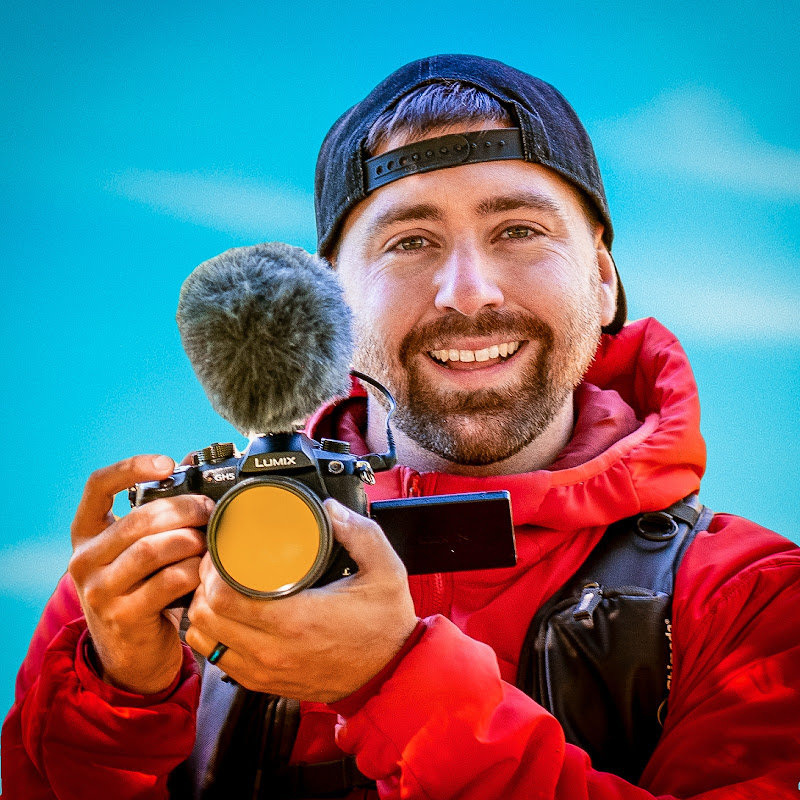
 Jeven Dovey
Jeven Dovey
One of the inherent benefits of YouTube as a platform is its interactivity. However, merely having access to this feedback isn’t enough; utilizing it effectively is what makes the difference. Primed by business studies and psychology perspectives, we understand that consumer feedback can be a potent catalyst for innovation. The Harvard Business Review discusses how customer participation in the production of goods and services holds immense benefits, and this is wholly applicable to YouTube content creation.
Firstly, audience reaction provides real-time, actionable insight into engagement. Comments, likes, dislikes, shares and retention rates are feedback mechanisms that paint a clear picture of what resonates with your audience and what doesn't.
In terms of practical application, refining scripts could involve modifying style, tone, pacing, or subject matter based on feedback. For instance, if certain narratives receive increased engagement, it might suggest a possible direction for future content. Adjustments could be made to the length or the visual elements based upon how much of your videos your audience typically watches. Every piece of feedback can translate to a tangible change in your script, and hence, in your storytelling.
Also, metrics like views, likes, and shares should be seen as indicators of audience reaction and not an absolute measure of quality. Remember, as a content creator, your distinctive voice and creative expression are equally important.
Here are a few recommendations to help facilitate the process of refining scripts based on audience feedback:
- Compile feedback: Consolidate audience reactions in terms of comments, likes, dislikes, shares, and even direct messages, to identify clear patterns.
- Analyze with objectivity: Feedback should be perceived without bias. Constructive criticism can help improve your content significantly.
- Prioritize changes: Integrate changes gradually. Prioritize them based on the frequency of similar feedback, the feasibility of the change, and the impact it can have.
- Test and Adapt: Implement changes in a test-phase manner. Compare the reactions to your altered content vs your original content to check for enhancement.
As YouTube has continued to evolve over the years, incorporating new mediums and formats in content has grown increasingly essential. It's no longer enough to simply churn out standard videos. To pioneer this shift, we need to embrace the power of collaborative writing, understanding the synergies, complexities, and opportunities it offers.
Benefits of Experimenting with New Mediums and Formats
Collaborative writing can be a game-changer, providing unique perspectives, generating creative ideas, and promoting effective communication. By incorporating business principles of collective creation, efforts can be synchronized to create fresh, appealing content.
Challenges and Solutions
Collaborative writing can bring about challenges, including differing opinions, slow decision-making, unequal contribution, and culture clashes. Here, psychology principles like group dynamics, conflict resolution techniques, and understanding individual motivations can be beneficial.
A 2017 study from McAfee on the value of collaboration states that "most successful companies are those whose employees collaborate in teams and across organizational, functional, and geographical boundaries." It highlights the importance of careful management and effective communication to tackle such challenges.
Robust communication and regular feedback nurture a supportive environment, and conflict resolution techniques assure that differing opinions contribute to rather than hinder the creative process. Recognizing individual motivations can boost engagement and commitment in the team.
Best Practices for an Effective Collaborative Process
-
Planning: Establish clear guidelines about roles, responsibilities, deadlines, and expected outcomes. A storyboard or a content map could be drafted to visualize the project.
-
Frequent Communication: Use team collaboration tools to share progress, provide feedback, and address issues. Structured meetings can ensure everyone is on the same page.
-
Leverage Each Team Member’s Strength: Every individual brings a unique set of skills and perspectives. Effective collaboration ensures these are leveraged to create high-quality content.
-
Encourage Feedback: Foster an environment where feedback is encouraged and appreciated. Constructive criticism can dramatically improve the final product.
-
Experiment and Iterate: To be more engaging, never be afraid to try new things. If something doesn’t work, learn from it and move on.
The YouTube channel 'Vsauce' showcases how new formats and collaborative efforts can render highly engaging content. Animations, infographics, and interactive quizzes enrich their videos, making complex scientific principles digestible and delightful.
Insights from psychology studies reveal that stories have an innate capability of engaging individuals and creating an emotional bond, harnessing the power of empathy and understanding. This is largely because stories appeal to the emotional, intuitive, and empathetic part of our brain. Hence, being updated with storytelling trends and techniques is pivotal to engage viewers and drive interaction.
-
Online Workshops: These platforms offer a space where professionals share practical insights and contemporary trends in storytelling. Participating in these workshops can be a great way to learn and adopt novel techniques.
-
Webinars and Podcasts: Many domain experts host webinars and podcasts featuring discussions around new storytelling approaches and techniques. Subscribing to such resources keeps you informed about the latest trends.
-
Networking and Collaboration: Collaborative writing brings an amalgamation of different perspectives, leading to a richer story. Engaging with other content creators, writers, and storytellers can provide deeper insights into emerging trends.
-
Social Media and Blogs: Following storytellers on social media or reading storytelling blogs can help understand what strategies are working for others.
Effective storytelling goes beyond merely adopting the latest trends. It involves striking a balance between using proven strategies and injecting innovation. The combination of maintaining originality while incorporating new trends ensures your content remains fresh and relevant.
Fine-tuning and Revising Scripts


 TheFigCo
TheFigCo
In the dynamic and fast-paced realm of YouTube, augmenting the content quality and relevance through incorporating feedback from viewers and peers holds paramount significance. Drawing on the theories of business and psychology, one can effectively incorporate feedback into YouTube content creation to improve its overall impact and reach.
From a psychological viewpoint, feedback is a vital motivational factor. As stated by psychologist Abraham Maslow in his 'Hierarchy of Needs', recognition and positive appraisal serve as key motivators. In the YouTube sphere, positive comments and feedback from viewers can thus be a driving force that pushes creators to strive for better content.
Bear in mind, however, that incorporating feedback is an art that comes with its own set of challenges. Feedback can often be contradictory or present in large volumes, making it difficult to pinpoint exactly what needs to be adjusted. It also requires a balance, as not all viewer feedback might align with the content creator's vision or purpose. Nevertheless, with strategic thinking and careful assessment, it is possible to navigate these hurdles and use viewer feedback to fine-tune scripts and enhance content quality.
Here are some recommendations for effective collaborative writing on YouTube:
-
Be Open to Criticism: Take constructive criticism positively and try to learn and grow from it.
-
Facilitate Regular Interaction: Stay connected with your audience regularly, and be responsive to their comments and suggestions.
-
Use Data Wisely: Analyze viewer feedback to identify patterns or trends that can guide your content strategy.
-
Stay Consistent Yet Flexible: While it's essential to remain consistent in your content delivery, being flexible in incorporating audience feedback is equally important.
-
Draw Upon Peer Expertise: Don't hesitate to ask for advice or input from peers or other YouTube creators.
Remember, revision and fine-tuning are integral parts of the content creation process. By incorporating feedback from viewers and peers, YouTube creators can take their content to unprecedented heights by effectively meeting viewer needs while enhancing their unique creative vision.
The Benefits and the Power of Collaboration
In the domain of YouTube script development for evergreen content, the opportunities that spring from collaboration cannot be overemphasized. This practice fosters creativity, broadens perspective, enhances solution development and filters out weaker ideas. Moreover, prolific YouTube creators have often sought collaboration to ensure that their content resonates over time, thus reaping the benefits of evergreen practices.
In tandem with the principles of business studies, collaborative writing adopts the concept of synergism, where the combined output of the group surpasses the sum of individual contributions. Just as organizational collaboration fosters innovative solutions, a diverse group of scriptwriters can synergize varied insights, ideas, and experiences to craft unique and compelling scripts. This approach supports the idea of 'idea meritocracy,' propounded by Ray Dalio, which emphasizes that the best ideas should win, regardless of where they originate in the collaboration hierarchy.
The Essential Practices in Evergreen Script Collaboration
Collaborative writing for evergreen content should take on certain practices to optimize the process:
-
Define Roles: A productive collaboration requires well-defined roles. Each participant should understand their responsibilities and their scope of contribution.
-
Open Communication: Foster an atmosphere that encourages the free exchange of ideas. This can be facilitated by creating shared online platforms or spaces to exchange and develop ideas.
-
Merge Diverse Perspectives: Variety is the spice of life, and so it is with content creation. Honor and leverage the range of perspectives from collaborators.
-
Iterative Feedback and Refinement: Ongoing feedback mechanisms, such as peer reviews or group critiquing sessions, can help refine the script.
Handling Challenges in Collaborative Writing for Evergreen Content
Collaborative writing isn't without its roadblocks. From differences in opinion to coordination challenges, the process may hit various stumbling blocks. Therefore, building a culture of respect, patience, and evidence-based decision making is crucial to thrive amidst these challenges.
The potency of effective collaboration in evergreen scriptwriting for YouTube is manifestly clear. It fosters innovation, ensures the message remains relevant, and improves the overall quality of the produced content. Nonetheless, collaboration also posits certain challenges that, if not properly managed, can hamper the harmonious creation of evergreen scripts. Therefore, adopt best practices and navigate challenges effectively to harness the power of collaboration for evergreen content creation on YouTube.
Tips for Self-Editing and Polishing Scripts
The Importance of Self-editing
Self-editing empowers content creators to refine their work with precision and self-awareness. A survey published in the Journal of Writing Studies noted that self-editing supports persuasive and emphatic writing, which is vital for engaging YouTube audiences. Essentially, scripts that undergo rigorous self-editing tend to resonate and connect more effectively.
Collaborative Writing and Editing
The philosophy of "two heads are better than one" holds great value in scriptwriting and editing. Collaboration can enhance the quality of scripts by introducing multiple perspectives, fostering creativity, and ensuring a comprehensive review of content. In a business research study, collaboration was linked with increased innovation and improved problem-solving, elements that can greatly enrich a script.
Tips for Self-editing and Polishing Scripts
-
Foster Self-awareness: Understand your intent for the video, the message you intend to deliver, and how it aligns with your audience's interests and needs.
-
Read Aloud: This technique can reveal awkward phrases, complex sentences, or redundancies that can be simplified or eliminated.
-
Use Editing Tools: Tools like Grammarly and Hemingway Editor can highlight syntax errors, passive voice, and long, complex sentences, aiding in refining the script.
-
Collaborative Editing: Share your script with colleagues, friends, or mentors. Their feedback can provide invaluable perspectives and help spot overlooked errors.
-
Breaks are Essential: Studies in cognitive psychology suggest that people need breaks to perform effectively on cognitive tasks. Stepping back from your script before reviewing it can provide a fresh perspective and help you spot areas of improvement.
-
Fact-check: Ensure your content is accurate and reliable. Misinformation can damage your credibility and result in viewer disengagement.
Challenges in Self-editing
While self-editing is crucial, it can also present challenges. Creators can become attached to their work, making it difficult to spot weaknesses or areas for improvement. Moreover, self-bias can limit objectivity in assessment. Collaborative editing can mitigate these challenges by providing a second pair of eyes and facilitating constructive dialogue around the content.
By understanding the importance of self-editing, adopting best practices, and addressing challenges, you can polish your script to perfection. As a YouTube content creator, your script is your canvas. Through meticulous self-editing, you can sculpt your words and ideas into a powerful message that resonates with your audience, driving engagement and growth.

Different types of YouTube content and their storytelling methods
In this section, we cover the variety of YouTube content and their respective storytelling techniques. As a content creator, knowing the content landscape allows you to craft scripts optimized for each type of content and appeal to a broader audience. Here are some popular YouTube content genres and their storytelling methods:
-
Vlogs: Personal, diary-style videos where YouTubers share their daily experiences and life events. Storytelling often follows a chronological order and emphasizes the creator's emotions and thoughts. Authenticity and relatability are key to engaging viewers.
-
Entertainment: Showcasing comedy skits, animations, or short films, these videos are designed to entertain. Storytelling techniques vary widely, but key attributes include captivating visuals, interesting narratives, and engaging performances.
-
Reviews and Unboxings: In these videos, creators review products or open packages to showcase their contents. Storytelling methods include sharing personal opinions, pointing out features or flaws, and comparing products to competitors.
-
Listicles and Top 10s: Compilation videos that rank items or ideas based on a particular theme. Clear structure, snappy pacing, and visually appealing graphics are essential to keep viewers engaged.
-
Tutorials and DIY: Step-by-step guides to teach viewers how to complete a project or learn a skill. A clear structure, simple explanations, and visual aids contribute to an effective storytelling method.
-
Gaming: Videos about video games, including game commentary, walkthroughs, and reviews. Engaging personalities, entertaining reactions, and in-depth knowledge of the subject matter are crucial to storytelling success.
- People watch more than a billion hours of video on YouTube daily.
- Over 500 hours of video are uploaded to YouTube every minute.^
The significance of scriptwriting and storytelling in YouTube content creation
Scriptwriting and storytelling are essential components of creating compelling YouTube content that will engage viewers and keep them coming back for more. They're the foundation of your videos, providing structure, organization, and a sense of narrative that makes your content interesting and accessible.
- Viewers are more likely to watch videos with a strong narrative and engaging content.
- According to YouTube Creator Academy, 70% of watch time comes from viewers who were recommended the videos.
The Importance of a Good Script and Story
A well-crafted script and narrative will:
- Engage your audience from beginning to end
- Provide a clear and coherent message
- Make your videos more memorable and shareable
- Improve viewer retention and watch time
- Help you communicate effectively with your audience
Scriptwriting Techniques
Here are some scriptwriting techniques to help you create engaging YouTube content:
- Define your goal: Determine the purpose of your video. What do you want viewers to learn or gain from watching it?
- Create an outline: Break down your video into segments or key points that you want to cover. This will help guide your script and ensure you stay on topic.
- Write conversationally: Write your script in a way that's natural and conversational. Avoid jargon and overly complicated language.
- Show, don't tell: Use visuals and storytelling techniques to show your viewers the points you're trying to make, instead of just telling them.
- Keep it concise: Aim to communicate your message as efficiently as possible. Avoid unnecessary details and lengthy explanations.
- Use transitions: Smoothly transition from one segment to the next, making sure to provide a clear connection between sections.
- Incorporate calls to action (CTAs): Encourage your viewers to interact with your content by including CTAs like "subscribe," "like," or "share."
Storytelling Techniques
Some effective storytelling techniques for YouTube content include:
- Start with a hook: Capture your viewers' attention from the beginning of the video with a compelling statement or interesting story.
- Establish conflict: Build tension by introducing a problem, challenge, or obstacle that your viewers can relate to or be interested in.
- Provide resolution: Offer a solution or share the outcome of the story you've built up in your video.
- Create relatable content: Make your content emotionally engaging by sharing personal stories or experiences that your audience can relate to.
- Keep it authentic: Be true to yourself and your brand, and avoid trying to be something you're not.
- Use visuals and sound effectively: Enhance your storytelling with appealing visuals and sound effects that help to support your overarching narrative.
To improve your scriptwriting and storytelling skills, consider exploring how to make YouTube videos, or seek inspiration from successful content creators in your niche.
By mastering scriptwriting and storytelling techniques, you'll be well on your way to creating high-quality YouTube content that connects with your audience and drives engagement. Remember to always review and revise your script and narrative, and to continually evaluate what's working and what can be improved.
Scriptwriting and Storytelling for YouTube Live Streams

Scriptwriting and Storytelling for YouTube Live Streams
Adapting storytelling techniques for real-time interaction
We delve into the dynamics of live streaming and how it creates an immersive real-time interaction experience for the audience.
The Story Arc in Real-Time Interactions
An exploration of how traditional storytelling techniques can be adapted to fit the instant nature of live streaming, whilst keeping viewers engaged throughout the live event.
Audience Engagement and Participation
Discusses strategies to encourage viewer involvement in the storytelling process, fostering a sense of community and enhancing viewer retention.
Maintaining Narrative Flow While Interacting with Viewers
Guidance on maintaining narrative continuity while responding to viewer comments in real-time, with tips on how to create a comprehensive and captivating YouTube Live Stream.
Techniques to Increase Viewer Watch Time
This part centralizes on effective storytelling strategies to increase watch time on youtube, helping creators to attract larger audiences and ultimately, benefit financially from their live streams.
Managing Audience Engagement and Live Chat During Streaming
Importance of Audience Engagement in Live Streams
Study show cases, tables of data and relevant statistics showcasing the positive impact of audience engagement on watch time, subscription rates, and overall channel success.
Mechanisms to Boost Audience Engagement
This section would contain images and explanations of different tools you can use to increase engagement during live streams, for instance, 'Live Chat', 'Super Chat', or 'Super Stickers'.
Here will be a list of positive practices (do's) and pitfalls to avoid (don'ts) when managing live chats during streams.
Techniques to Enhance Storytelling During Live Streams
The Use of Scripts in Live Streams
An analysis table to compare unscripted versus scripted live streams, pros and cons, along with images of possible script outlines.
Identifying and Moderating Negative Behaviour in Chat
Charts showing common negative behaviours and practical advice on how to moderate and discourage such actions to maintain a positive live chat environment.
Designing and Implementing Live Chat Moderation Policies
Maintaining Your Mental Health & Mitigating Creator Burnout
An overview of strategies and resources to deal with creator burnout and maintain mental health as a YouTube live streamer.
Making Use of Audience Feedback
Generating Revenue from Live Streaming
Discussion about the various ways to monetize live streaming, like Patreon channel memberships, fan-supported content, ads, etc., linked to techniques for increasing audience engagement. An information nexus about how to make money on YouTube is provided for further reading.
Preparing a content outline for live streams
A well-thought-out content outline greatly impacts the quality of your YouTube Live Stream. To create attention-grabbing live streams, consider using the following steps when planning your content.
Identify your Topic
The initial step involves deciding what you plan to discuss during the live stream. It could be a subject that you're passionate about, a tutorial, an FAQs session – the choices are limitless.
Conduct Research
Once you have identified the topic, conduct comprehensive research to gather all the relevant information. This will enable to deliver valuable content to your audience.
Order your Content
List down all your topics and subtopics in a logical order. This provides a systematic guide to follow when addressing your audience.
Schedule Breaks
Live streaming can be a lengthy process. Make sure you schedule breaks during your streaming to avoid monotony and maintain your audience's attention.
Include a Q&A Session
Consider scheduling a Q&A session during the live stream. This allows an interactive session with your audience and increases engagement levels in your live stream.
Run a Practice Session
Once you have prepared the content outline, perform a dry run. This helps to ensure that all the listed topics and details in the content outline run smooth during the actual broadcast.
Use the Right Equipment
Ensure you have the right equipment for your live stream. The quality of your video and audio can have a huge impact on viewer retention.
To increase viewership and engagement, it's essential to apply video optimization best practices. These practices can range from creating captivating headlines to adding a strong call-to-action (CTA) at the end of your videos. Check out this guide to video optimization best practices for more details.
Take your content to new heights by integrating these preparation steps and see the difference in your YouTube Live Streams.
Scriptwriting and Storytelling for YouTube Shorts

Short-form content can be both liberating and challenging. Liberating because you can pack a punch in a succinct manner, and challenging because you need to grip your audience in a few seconds. According to a study from University of Nebraska Omaha, people have a shorter attention span today more than ever, and hence, creating engaging short-form content can significantly increase your audience retention. Here are a few strategies to adapt your storytelling techniques for YouTube Shorts, reminiscent of successful creator brands.
- Start With a Bang:
First impressions matter, especially, when you are dealing with short-form content. The opening of your YouTube short should draw viewers in instantly. This could be an interesting question, a shocking fact, or a quick preview of what's to come.
- Streamlined Narrative:
Unlike in long-form content, every word counts in a short. Keep your narrative focused and simple. This doesn't mean you can't tell complex stories, but you need to do so in a manner that your audience can quickly understand.
- Employ Impactful Visuals:
Even with the saturated attention economy, visuals can arrest a viewer's attention. Along with your narrative, use powerful visuals to communicate your story. This not only makes your content more engaging but also helps to clarify your message.
- Leverage Emotional Connection:
Emotional content has a more profound impact on viewers. As demonstrated in previous psychological studies, it’s human nature to connect more deeply with stories that evoke feelings. By tapping into this, you can craft compelling narratives that resonate with your audience on a deeper level.
-
Experiment with Formats:
-
Call to Action:
Your viewers need direction post watching your video. A call to action can be an invitation for viewers to like, comment, share, and/or subscribe to your channel. Since audience engagement is one of the critical components in growing a YouTube channel, this strategy can also aid in driving your channel's growth.
- Collaborate with Others:
Collaboration can produce remarkable results when it comes to content creation. According to certain business studies concepts, collaboration or 'cross-pollination' can spark new ideas and provide a fresh perspective on storytelling. This process can result in an effective output that’s different from what any one individual might have produced alone.
Bear in mind that collaborative writing can pose some challenges, like coordinating schedules or aligning visions. However, with clear communication and an understanding of the shared goals, these challenges can be effectively managed.
Navigating the terrain of short-form content needs a shift in perspective, but it offers an exciting opportunity to adapt, experiment, and engage with your audience in new ways. With the right techniques, you can make the most of this format on YouTube and reach more users with your compelling stories.
Creative ways to deliver a full story in under a minute
- Leverage Time Compression
In the realm of films and television, time compression is a powerful storytelling technique where long, detailed narratives are abbreviated into concise, impactful sequences. This notion aligns with psychological concepts such as the Greenfield Theory of Cognitive Compression which implies that humans can process compressed representations of experiences efficiently. This principle can be pragmatically implemented into your YouTube shorts scripts, compacting lengthy narratives into bite-sized stories.
-
Explore Micro-Storytelling
-
Utilize The "Cliffhanger" Technique
Creating suspense by deploying the 'cliffhanger' technique can effectively retain audience attention. By involving the viewers emotionally, you compel them to explore the continuation or resolution in paired or sequential shorts.
- Maximize The Power of Visuals
As the old saying goes, "a picture is worth a thousand words". Making use of metaphors, symbols, and visual cues can circumvent the need for verbose explanations, making your narrative efficient and engaging. This concept is supported by the Dual-Coding Theory in cognitive psychology, underlining the importance of both verbal and visual memory systems in interpreting information.
- Embrace Collaboration
Employing a collaborative approach to scriptwriting is another effective strategy to create compelling stories in a limited timeframe. By tapping into the diverse perspectives and unique ideas of a team, you can create rich, multifaceted narratives. This approach encourages "creative collisions", an idea derived from business studies, where disparate ideas converge to facilitate innovation. This approach not only applies to the process of creating content for YouTube but is also crucial when iterating and improving upon your initial ideas.
- Craft an Evocative Thumbnail Strategy
Your expertise in YouTube SEO isn’t just beneficial—it’s crucial. Thumbnails act as the gateway to each short, helping you grab the attention of an audience that otherwise might scroll past. If done carefully, evocative thumbnails can signify a story at a glance, substantially contributing to your overall narrative.
These strategies and techniques, paired with a deep understanding of YouTube's algorithm, can ensure your short stories are optimally designed for the platform's unique offerings. Remember, compelling storytelling, irrespective of the medium or duration, hinges on human connection and emotional engagement. Ensure that this remains at the forefront of your content creation strategy.
Validating the old adage 'less is more', YouTube Shorts, with their constraint of 60 seconds, have gained immense popularity for ushering in the bite-size content revolution. A snappy script lies at the heart of a successful Shorts, coupled with engaging visuals. It presents a unique opportunity and challenge for story-tellers to craft a crisp script with a compelling narrative that can hook audiences in just a minute. This necessitates a nuanced understanding of linguistics, business principles, viewer psychology, and collaboration dynamics.
Combining Linguistic Precision with Business Principles
Crafting a successful script for YouTube Shorts requires both linguistic precision and a keen understanding of business principles. An effective written piece — whether a novel or a sixty-second video script - is expected to be both enticing and enlightening. Succinct storytelling that incorporates the concept of ‘value proposition’ from business studies works wonders.
Value proposition centers around offering something compelling that piques the viewer’s interest and separates your content from the competition. Ensuring that the script promises and delivers this value boosts audience retention, engagement, and channel growth. Essentially, brevity is the secret to writing for YouTube Shorts, but the content must simultaneously remain informative and entertaining.
Seizing Viewer Psychology with Catchy Content
The brevity of YouTube Shorts places pressure on creators to optimize their keywords for YouTube within a compact timeframe. This means embedding the most relevant phrases and terms that correlate to your content and appeal to your intended viewers in just sixty seconds. It's essentially an SEO strategy adapted to scriptwriting, that capitalizes on viewer psychology.
Leveraging the Power of Collaboration for Script Writing
Script writing for YouTube Shorts, while challenging, is not a solo feat. Collaboration not only leads to better ideas but creates a diversity in content that no single creator can achieve alone. Techniques such as brainstorm sessions, round-robin writing, and collaborative channels like online forums or YouTube video editors can multiply creativity and enhance productivity.
While each collaborator brings a distinct perspective to the project, maintaining consistency in tone and style can be challenging. Balancing individual styles with the channel's brand voice often requires dedicated effort and mutual understanding among the team.
Tips for Effective Script Writing for YouTube Shorts
-
Start with a bang: Engage viewers in the first few seconds. Include a hook or tease the main point to keep them watching.
-
Include a clear message: Define what you want to convey and stick to it. A single, clear message is more likely to resonate with the viewers.
-
Keep it simple: Use concise, simple language and avoid jargon. Remember, clarity trumps cleverness.
-
Use storytelling techniques: Engage viewers emotionally by leveraging storytelling techniques like climax, resolution, or surprise elements.
-
Collaborate smartly: Utilize team strengths, respect individual styles, and align everyone with the brand voice.
-
Adapt for the algorithms: Be aware of YouTube's Shorts Algorithm and adapt your script for optimal visibility and reach.
By embracing the exciting challenge of script writing for YouTube Shorts, creators have an opportunity to innovate their storytelling methodology. Quick, attractive, and memorable content that leverages language, business techniques, psychology, and astute collaboration is the future of YouTube scripting.
Scriptwriting for Comedy and Entertainment Videos

Visual and verbal humor stand as the vital elements that define the effectiveness of comedy and entertainment videos on YouTube. To maximize the impact of these elements, channel creators often resort to strategies like collaborative writing. Collaborative writing not only improves the richness and quality of humor but also infuses fresh perspectives into the content. It thrives on diverse viewpoints, skills and, knowledge, which offer a broader canvas for creativity, making a perfect milieu for comedy and entertainment.
Understanding Humor from Different Perspectives
When considering collaborative writing from the business perspective, it could be likened to joint production, recognized as a highly efficient approach that allows an exchange of ideas and knowledge, leading to a high-quality output. Similarly, from the psychological point of view, humor entails a certain sense of surprise that leads to the joy of discovery, a concept that can be greatly enhanced through collaboration.
Benefits and Challenges of Collaborative Writing
Collaborative writing comes with its own set of benefits and challenges. It's important to recognize the two sides to manage the process effectively.
Benefits:
-
Diverse Input: Various writers bring different styles and perspectives to the table, enriching the content.
-
Fosters Creativity: Brains collaborating on a piece tend to explore many possible scenarios and humor angles.
-
Improves Precision: With multiple writers, the chances of catching errors and inconsistencies increase.
Challenges:
-
Time Consumption: Managing multiple opinions and mediating between viewpoints could be time-consuming.
-
Risk of Over-complication: With too many perspectives, the simplicity and focus of the content could be compromised.
-
Consistency: Ensuring a consistent tone and style throughout the video could become difficult with multiple writers.
Nevertheless, the benefits of collaborative writing often outweigh the challenges when handled effectively.
Best Practices for Collaborative Writing
-
Clear and Shared Objectives: Establish a common understanding of what the specific humor type and tone should be
-
Regular Communication: Ensure frequent discussions to iron out disagreements and to keep everyone on the same page.
-
Defined Roles: Crystal clear roles can help avoid stepping on each other's toes.
-
Openness to Criticism: An essential for the success of collaboration. A culture of openness can boost the process of co-writing.
-
Utilization of Collaboration Tools: Utilize online collaboration tools to brainstorm, share drafts, and provide clear feedback.
Collaboration Techniques in Action – Case Study
Collaborative writing, when carefully managed, can lead to an impactful fusion of visual and verbal humor for comedy and entertainment videos on YouTube. It offers a churning pot of ideas, styles and perspectives that could lead to engaging, irresistible content. The key lies in effectively managing the collaboration, a skill that could be honed with practice. In the world of YouTube comedy, collaboration could indeed be the perfect recipe for humorous concoction.
Techniques for Effective Pacing and Timing
In the exciting world of YouTube, pacing and timing are two indispensable tools that help create an emotional climate, build suspense, and dictate how the comedy unfolds. They can wield influence over the entire narrative structure, from characterization to mood setting, steering viewers’ emotions, and even affecting their level of engagement.
The Importance of Pacing and Timing
The energetic pulse of a comedy video is its pace, and it's the rhythm that decides the perceived passage of comic elements. Timing, on the other hand, deals primarily with the precision of delivery. A perfectly timed punchline or dramatic pause contributes significantly to the comedic payoff. YouTube’s inherent quick, dynamic nature benefits significantly from rapid pacing and pinpoint timing.
Deb Sofield, a renowned public speaker, rightly states, "Good communicators know that what you say and how you say it are of equal importance - and they understand that timing is everything." Great comics often ride on the wave of precise timing and well-regulated pace, qualities that also hold true for successful YouTube content.
Best Practices for Timing and Pacing
Pacing and timing, like other aspects of scriptwriting, can be honed with practice and the following set of techniques:
Keep it Tight and Concise: Long, drawn-out narratives or jokes can lose their comedic impact. Precision with language adds to the punch, so be sure your script is free of any superflacious elements.
Vary Your Pace: Constant speed, whether fast or slow, can frustrate viewers. Switching between a quick pace to build energy and a slower one for comic relief can engage your viewers in a rhythmic dance of comedy.
Make Use of Pauses: A dramatic pause after a punchline can amplify the comedy and provide viewers time to take in and respond to the joke.
Use Visual Cues: A sight gag, comedic action, or facial expression can supplement verbal humor. Be sure your script includes instructions for such elements.
Collaborative Writing for Optimal Results
Collaborative writing, especially in comedy, is often the magic ingredient that adds flavor to the script. Varied perspectives can result in unexpected comic outcomes, and the division of task can free up mental space for creativity.
Karen Holtzblatt, a noted psychologist, explains that "Designing a product requires not just individual brilliance but the merging of different viewpoints." This idea of combining divergent thoughts is powerful in a comedy scriptwriting context. A writing room full of vibrant, creative minds can lead to the generation of comedy gold, with each writer contributing their unique touch to the rhythm of the script.
Implementing tools like round robin writing or brainstorming sessions can enhance the output. A diversified group can achieve a universal appeal, ensuring your YouTube content strikes the right chord with a wider audience.
Mastering the art of pacing and timing is vital in the realm of YouTube comedy and entertainment. While it isn't a skill developed overnight, the distinctive blend of training, understanding, and practice can help content creators make their mark in the dynamic world of YouTube.
Writing Comedy Sketches and Humorous Content
Crafting humorous and snappy content can be challenging, yet, when done efficiently, it can add an extraordinary sparkle to your YouTube channel. Comedy is multifarious in nature and the laughs it evokes can serve as an excellent vehicle for capturing and maintaining your audience's attention. Therefore, as we delve into the craft of writing comedic content, we'll be exploring not only the artistic side but also the importance of collaboration and the techniques that facilitate it.
The Collaborative Advantage in Comedy Scriptwriting
Although the comic geniuses of yesteryears, from Charlie Chaplin to Jerry Seinfeld, often flashed their wit in solo performances, in the contemporary world of content creation, creators have discovered the catalytic power that collaboration can ignite. In a psychological perspective, this can be explained with the concept of group creativity where the sharing of diverse ideas can lead to higher levels of creativity.
Research from the field of business and management also underpins the importance of team efforts, suggesting that groups can bring about innovation faster through the wide range of concepts and perspectives they offer. Clearly, when it comes to writing comedic content for YouTube, harnessing this collective intellectual prowess can be a game-changer.
Collaboration Techniques for the YouTube Scripting Process
Certainly, cooperation provides numerous benefits, but how can you manage it in the context of scriptwriting?
The writing room is one collaborative space often employed in the realm of television, wherein a team of writers get together to brainstorm ideas, build on others' thoughts, and phrase out the final script. This kind of collaborative space could be adapted for YouTube content creators, either physically or virtually.
Online collaborative tools can also prove helpful in the creative process. For instance, Google Docs could be used to draft scripts simultaneously, allowing for real-time edits and ideas from all team members. This resource not only eases the conceptualization process but also allows for instantaneous feedback, which is invaluable in comedy creation.
Guidelines for Collaborative Comedy Writing Process
Here are a few tips to facilitate your collaborative efforts in comedic content creation.
-
Know Your Audience: Understand the type of humor that appeals to your target demographic. This would guide the group's brainstorming efforts and help sculpt the general tone of your content.
-
Encourage Open Contribution: All ideas should be welcomed and considered. Lowering barriers to input can lead to the discovery of an unexpected gem.
-
Critique Constructively: Feedback should not be disregarded. Rather it should be constructive, aiming at improving the script while also motivating the team.
-
Assign Roles: To ensure a smooth process, proper roles should be assigned - from idea generation to script finalization.
-
Iterate & Test: Don't be afraid to revise your content and test it with a trusted panel. The best version of a comedy script often isn't the first one.
Scriptwriting for Educational and Informational Videos

In the digital knowledge economy, the importance of viewer engagement cannot be overstated. A unique and potent way to boost engagement on your YouTube channel is through interactive content. Interactive content compels viewers to participate actively, encouraging their interaction and response, thereby increasing viewer engagement.
Benefits of Interactive Content
Studies in communication theory underscore the efficacy of interactivity in strengthening communication. Interactive choice theory, for instance, posits that the more interactive a communication platform, the more influential it becomes. YouTube, with its capacity for boundless interactivity, epitomizes this new medium of communication.
The benefits of interactive content are manifold. It heightens viewer engagement, increases retention and comprehension, and fosters a sense of community. Interactive content can also improve your YouTube Algorithm visibility, as engaged viewers are likely to spend more time on your channel, thus increasing your watch time. Moreover, the responses you garner from interactive content can provide useful feedback to guide your content creation strategy.
Best Practices in Interactive Content Creation
Collaborative writing for YouTube content can enhance interactivity. Involving multiple scriptwriters opens avenues for diverse perspectives, fresh ideas, and new presentation styles. However, to optimally harness the collaborative process, some best practices should be considered:
i. Prioritize Audience Engagement: Bear in mind that your primary objective is to spark audience interest and maintain their engagement. The content should be designed with this consideration at the forefront.
ii. Promote Cooperation: Encourage scriptwriters to cooperate rather than compete. This will help incorporate all voices, thus enriching the content.
iii. Foster an Open Atmosphere: A constructive environment encourages creativity. Include regular brainstorming sessions and be receptive to ideas, however unconventional they might seem.
Challenges in Interactive Content Creation
While the advantages of interactive content are apparent, the process of creating such content through collaborative efforts can present certain challenges. These may include difficulty in coordinating between writers, ensuring consistency in tone, managing workflow, and resolving differences of opinion constructively.
To mitigate some of these problems, scriptwriters can utilize project management tools and platforms to help streamline their collaborative efforts. These can facilitate communication, enhance transparency, and ensure a smoother creative process.
Tips for an Effective Process
Here are some specific recommendations to help you navigate the collaborative scriptwriting process for creating interactive YouTube content:
a. Find Youtubers for Collaborations: Working with other creators in your niche can boost your digital footprint and generate fresh, interactive content.
b. Use Searchable Keywords: Incorporating keywords for YouTube enhances the discoverability of your content. Interactive elements like live-chat boxes could be leveraged for keyword generation and idea crowdsourcing.
c. Include Call to Actions: Engage your viewers actively by incorporating call-to-action phrases within your content. Encourage subscriptions, likes, comments, and shares to increase viewer interactivity.
Interactive content serves as a potent tool for engaging viewers on your YouTube channel. Harnessing the partnership of multiple scriptwriters can ensure diverse, dynamic, and engaging content. Keeping open communication and fostering a constructive atmosphere are pivotal in this process. Adopting these strategies can help you create compelling, interactive content, capturing viewer attention and fostering a loyal and engaged viewership.
Perhaps one of the most important aspects to consider when structuring educational content is the way knowledge is subdivided. According to Ebbinghaus's forgetting curve from cognitive psychology, people are more likely to remember information if it is broken down into multiple, bite-sized pieces. This principle can be incorporated in the YouTube platform by creating series of short videos.
It is also crucial to understand the value of storytelling in educational content. Research reveals that stories are 22 times more memorable than facts alone, and YouTube provides an excellent platform to integrate storytelling into the learning process. Videos can go beyond the talking-head format to include graphics, animations, or real-world scenarios that help to illustrate various concepts.
However, creating structured educational content is not without its challenges. One main obstacle is that producing high-quality educational videos requires significant resources, including appropriate filming equipment. It can be a daunting task to start your YouTube channel and choose the best camera and microphone for YouTube to produce high-quality content. It is worthwhile investing in good-quality equipment as poor audiovisual quality can distract from the educational messages.
Collaborative writing offers numerous advantages in crafting educational content. Not only does it allow content producers to pool their technical skills and content expertise, but it also enables diverse perspectives. Moreover, collaborating facilitates greater creativity and problem-solving, essential traits for making engaging and informative videos.
Implementing collaborative writing in an effective manner requires a structured process. Here's a list of some recommendations:
- Define clear roles and responsibilities for each team member.
- Make use of modern collaboration tools, such as cloud-based writing and review tools.
- Establish regular meetings to discuss progress and resolve issues.
- Encourage open communication and feedback.
- Consider using a professional editor to review and polish the final script.
Beyond the creation stage, it's crucial to remain receptive to feedback and criticism once the content is published. This is crucial in dealing with negative feedback and burnout, a common issue faced by content creators.
Best Practices for Scriptwriting
Collaborative writing can significantly contribute to the process of scriptwriting. This method offers different perspectives, thus leading to comprehensive and diverse content. Analytics firm McKinsey points out that collaboration can increase the speed and quality of outputs, as well as enhance organisational health.
To leverage the power of collaboration, here are some key best practices:
-
Create a shared scriptwriting guide and criteria to establish a unified tone and style.
-
Set clear roles and responsibilities for each team member, promoting accountability and efficiency.
-
Encourage open communication for creative brainstorming.
-
Review and revise collaboratively, harnessing the collective wisdom of the group.
Challenges of Collaborative Scriptwriting
Collaborative scriptwriting, while promising, is not without challenges. Differing views can occasionally lead to conflicts, while physical distance or time zone differences may hinder full engagement and participation of all team members.
To overcome these hurdles, employ tactful conflict management strategies, and utilize technology to facilitate 'real-time' collaboration or asynchronous contributions. For instance, use online collaborative tools like Google Docs, which allow multiple writers to contribute simultaneously no matter their location or timezone.
Scriptwriting for Story-driven Content


 Jeven Dovey
Jeven Dovey
Tension and suspense are crucial in the creation of engaging story-driven content, significantly influencing the viewer's attention span and overall interest in the narrative. Mastering these narrative techniques can contribute significantly to a video's watch time, a vital metric in the YouTube algorithm, hence crucial for your video’s success in organic search.
- The Benefits of Building Tension and Suspense
The strategic use of tension and suspense can result in a compelling narrative that grips the viewer, increasing the likelihood of continuous viewership and viewer retention. This technique is not merely a tool for traditional storytelling; even YouTube content focused on topics like tutorials, commentary, or reviews can benefit from a suspense-based approach. By building anticipation, you not only maintain viewer interest but also drive them to watch until the very end where a clear call to action can increase engagement levels (likes, shares, comments).
- Techniques for Building Tension and Suspense
Foreshadowing is an excellent technique for building suspense. By hinting at future events, you keep your audience curious and invested in the outcome. Suspense can also be created through deliberate pacing of the narrative. Slowing the story at crucial moments can build tension, while speeding up the pace can create urgency and excitement.
Another effective strategy involves creating scenarios of uncertainty or conflict which can evoke viewers' emotions. This not only grips the attention of the audience but also stimulates their emotional connection to the narrative.
The use of visuals (e.g., thumbnail optimization for higher CTR) and sound effects should not be overlooked. A well-designed thumbnail can arouse curiosity, while ominous music or sound effects can set the mood and heighten suspense.
- The Role of Collaborative Writing
Collaborative writing brings together a variety of perspectives, enhancing the script's ability to create suspense and tension. Different writers can present unique perspectives on how to build anticipation, while collaboration allows for the refinement of these ideas into a cohesive and captivating narrative.
However, this approach has its challenges. Managing and synchronizing different inputs can be demanding and may sometimes lead to conflicts. Also, important concepts or ideas could get lost due to miscommunication. Hence, effective communication and a clear understanding of roles within the team are essential for successful collaborative writing.
Furthermore, invest in collective brainstorming, actively encouraging all team members to contribute their ideas. This promotes a sense of shared ownership and creativity, often leading to unique and innovative ways of building tension and suspense in your narratives.
- Applying Psychology to Enhance Tension and Suspense
To effectively grip your audience's attention and interest, consider incorporating psychological principles into your scriptwriting. The Zeigarnik Effect, for instance, suggests that people remember uncompleted tasks more than completed ones. A story that leaves certain plot points or tasks incomplete can keep viewers wondering what will happen next, hence building suspense and encouraging them to watch subsequent videos.
Crafting relatable characters is crucial for successful scriptwriting for story-driven YouTube content. It establishes an emotional connection between your video content and viewers, thereby increasing viewers' interest and engagement with your channel. This is intrinsically linked to a core metric of YouTube's algorithm, the viewer retention rate, which is the percentage of a video the average viewer watches. Understanding how to manipulate and maintain this rate strongly bolsters the potential for channel growth.
The Relation between Psychology and Character Creation
As YouTube content creators, we can borrow concepts from the field of psychology to develop characters that resonate with our audience. The theory of personality traits, for instance, suggests that five main attributes define human personality: openness, conscientiousness, extraversion, agreeableness, and neuroticism. By modeling your characters on these real-world human attributes, you can create complex, believable personas that your audience will find genuinely interesting and relatable.
The Benefits and Challenges of Collaborative Writing
Collaborative writing can often lead to the creation of engaging and diverse characters. As creators gather diverse insights and experiences, the characters become more encompassing, thus catering to a larger audience. However, collaboration also has its challenges, such as potential conflicts over creative control and difficulties in coordination. Therefore, utilizing collaborative tools such as scriptwriting software that allows simultaneous editing and version control can streamline the process.
Approaches to Creating Relatable Characters
- Develop Detailed Backstories: Dwell into the past and future of your characters, fill them with experiences, dreams, and aspirations. This complexity makes the audience relate with them on a deeper level.
- Engage with Your Audience: Invite your audience to share their ideas about character development. This interaction not only helps in creating relatable characters but also organically grows your channel through increased active engagement.
- Show Vulnerability: Showcase your character's challenges and flaws. This vulnerability makes them more human, likeable, and relatable, increasing viewer retention.
- Collaborate with Other Creators: Cross-creator collaborations can provide fresh perspectives and unique characteristics to your characters. Platforms that allow for youtube collabs assist in finding the right fit for collaboration.
To sum it up, creating relatable characters is an art. It requires a deep understanding of human psychology, a willingness to share narrative control through collaboration, and an ongoing engagement with your audience. The benefits, however, are profound, leading to engaged and loyal audiences, boosting your viewer retention rate, and subsequently allowing you to grow your youtube channel both in terms of viewership and impact.
Business studies often emphasize the power of cooperation in generating outputs that are stronger than those that an individual can produce. This principle is very much applicable to YouTube content creation, which calls for a meeting of minds and pooling of diverse skills for generating appealing narratives.
-
Surprise element: Adding a slight twist or surprise can leave a lasting impression.
-
Collaborate: Share ideas with team members or influencers in the same genre. Fresh perspectives can bring forth novel concluding ideas.
-
Reiterate the emotional journey: Amplify the impact of the story by underlining the protagonist's emotional journey.
-
Incorporate narrative tools: Cliffhangers, teasers, or previews of upcoming content are effective tools.
Scriptwriting for Tutorials and How-To Videos
- Understand your audience
- Break it down
- Be specific and explicit
- Encourage engagement
- Take advantage of YouTube's features
- Review, revise, and rehearse
- Statistics
- Explaining with Simplicity
- Do's & Don'ts

Crafting Step-by-Step Instructions for YouTube Tutorials and How-To Videos
Crafting compelling step-by-step instructions for YouTube tutorials and how-to videos is both an art and a science. It involves meticulous detail, creative storytelling, and strategic structuring. This section will delve into the best practices for creating tutorial and how-to scripts designed to capture attention, build understanding, and drive viewer engagement.
Understand your audience
First and foremost, start with a clear understanding of your target audience.
- Who are your viewers?
- What's their level of knowledge or experience on the subject matter?
- What kind of language do they understand or resonate with?
With this information, you'll be able to craft a script that is tailored to your audience's needs and communication style.
Break it down
Think like a teacher. Break your topic into smaller, manageable chunks. It will help the audience to digest the information more easily and keep them from feeling overwhelmed.
For instance, if you are creating a tutorial on "how to make a YouTube video", you could structure your video like this:
- Chapter 1: Planning your video
- Chapter 2: Shooting your video
- Chapter 3: Editing your video
- Chapter 4: Uploading and optimising your video on YouTube
This way, your viewers can easily skip to the sections they are interested in or go back to a specific section for review.
Be specific and explicit
Give clear, specific instructions. If you're teaching a complex process, a vague or implied step could leave your viewers confused and frustrated.
Remember, what might seem obvious to you may not be to your viewers. So, be explicit in your instructions. Back it up with graphics, animation, or on-screen text to re-emphasize your points and increase comprehension.
Encourage engagement
Engage with your viewers throughout your video. This not only keeps the audience interested but makes the viewing experience feel interactive.
Take advantage of YouTube's features
Take advantage of YouTube's tools like cards, end screens, and the description box to share additional information. This could include reference materials, related videos, or the timestamped breakdown of the video's sections.
Review, revise, and rehearse
Once you've written your script, review it and revise as necessary. Clarity is key. Say it out loud or role-play it with a friend or colleague to see if any part feels confusing or awkward, then make adjustments as necessary.
By following these guidelines, you'll be able to craft step-by-step instructions which are not only informative but also engaging and viewer-friendly. Your scripted tutorials and how-to videos will result in more viewer satisfaction, retention, and growth on your YouTube channel.
Here's a don't: Don't assume your audience knows the jargon or terminology associated with your topic. Always explain these terms for all your viewers' benefits. And here's a do: Do use annotations, cards, and links in your video to reference additional resources; just make sure they enhance, not disrupt, the viewer's learning experience. With these in mind, craft your next tutorial so compelling, that viewers can't help coming back.
Remember, the perfect script is not written, it's rewritten. So keep refining until it sounds just right. And don't forget to visit our section on "how to edit YouTube videos" for the technical side of crafting a brilliant how-to video.
Demonstrating processes visually
In the digital age, visual demonstrations effectively complement written and verbal explanations. YouTube, as a popular video-sharing platform, provides a powerful medium to share how-to videos and tutorials to an extensive audience base. This section will explore the quintessential elements of visually demonstrating processes in scriptwriting for tutorials and how-to videos.
Statistics
To comprehend the importance of visually demonstrating processes on YouTube, consider these statistics:
- 86% of YouTube viewers admit using YouTube to learn new things (Google, 2018)
- Tutorial videos are the second most desired type of video content, following entertainment (Hubspot, 2020)
These values underline the demand for instructional content on YouTube, stressing the importance of proficient visual demonstrations within your video content.
Tables and lists provide a clear, efficient breakdown of steps in a process. They can organize key points, making it easier for viewers to follow along in a tutorial.
| Step | Action | Recommended Tools |
|---|---|---|
| 1 | Identify Your Goals | Mind Mapping Tools |
| 2 | Research | Google Search, Keyword Planner |
| 3 | Scriptwriting | Microsoft Word, Google Docs |
Simplifying Complex Concepts
Simplifying complex concepts is crucial in scriptwriting for tutorials and how-to videos on YouTube. The presenter's ability to condense intricate ideas and processes into manageable chunks for the viewers to understand can significantly elevate viewer retention.
Explaining with Simplicity
- Start by familiarizing yourself with the topic. Details matters, and the more you understand it, the more efficient you can break it down.
- Use simple language as opposed to analytics or techno-speak. Not all viewers will familiarize with technical terms.
Integrate elements such as:
- Statistics: They add authenticity to your message and boost audience trust.
- Images: An image can tell a thousand words. Relevant visuals reinforce understanding.
- Tables: Use them to summarize or compare information.
Do's & Don'ts
Positives & Negatives
- Do use analogies and metaphors. They help viewers visualize and understand complex concepts better.
- Don’t rush through explanations. Grant viewers time to digest new ideas.
- Do rehearse your script. It ensures a smooth flow of ideas while presenting.
- Don’t use complex vocabulary. If a simpler word is available, use it.
Pros & Cons
- Pro: Using anecdotes brings warmth to your video, making it relatable.
- Con: Avoid going off on a tangent. Stay focused on the topic.
Create flowcharts or lists to simplify concepts:
- Lists are perfect for steps, tips, or items.
- Flowcharts illustrate a process or system efficiently.
Analyze concepts through different angles to simplify them:
- Compare and contrast
- Cause and effect
- Problem and solution
Let's say you are simplifying the concept of the 'YouTube Algorithm.'
- Start with a simple definition.
- Break it down into sections such as 'How it affects viewership?' and 'Tips to optimize it.'
- Use statistics to support your points.
- Use a flowchart to illustrate the algorithm working.
- Use keywords related to 'keywords for YouTube'.
By incorporating these strategies in your scriptwriting, you can successfully simplify complex concepts, aiding your audience's understanding and potentially boosting your YouTube retention rate.
Scriptwriting Techniques for YouTube Videos
- Developing Strong Video Concepts and Themes
- Establishing a clear and cohesive story arc
- Script Adaptations for Different YouTube Genres
- The Power of CTAs on YouTube
- Tracking CTA Success through Analytics
- Writing engaging dialogue and narration

Scriptwriting Techniques for YouTube Videos
Developing Strong Video Concepts and Themes
Developing strong video concepts and themes is crucial for a successful YouTube channel. It helps you stay focused and create unique content that resonates with your target audience. In this section, we'll discuss various techniques that create compelling concepts and themes for your YouTube videos.
- 70% of YouTube viewers believe that YouTube content is more relatable and authentic than traditional media (source.
- Channels with strong concepts and themes drive up to 3X more watch time (source.
Creating a Video Concept
- Research popular topics and trends within your niche.
- Use keyword research tools to find relevant topics that are being searched for keywords for youtube.
- Brainstorm unique angles and ideas for your video concepts.
- Put together a compelling story that engages your viewers.
- Incorporate elements of surprise, emotion, humor, or controversy to keep your viewers engaged.
Developing a Consistent Theme
- Stick to a central topic, style, or format that aligns with your channel's niche and target audience.
- Create a visual identity by using consistent colors, fonts, and graphics in your thumbnails, channel art, and video intros.
- Develop a content schedule to maintain a consistent posting frequency, ensuring that your audience knows what to expect and when.
- Develop a unique voice and personality for your channel.
- DO create engaging and relatable content for your target audience.
- DO follow trends, but find unique and creative ways to present them.
- DO take inspiration from other creators within your niche.
- DON'T copy or plagiarize other creators' content.
- DON'T create misleading or clickbait content.
- DON'T ignore your audience's feedback and engagement.
Chart Viewer Retention Rate and Strong Video Concepts/Themes
| Viewer Retention Rate | Importance |
|---|---|
| 0 – 20% | Weak |
| 20 – 40% | Average |
| 40 – 60% | Good |
| 60 – 80% | Strong |
| 80 – 100% | Exceptional |
Establishing a clear and cohesive story arc
A story arc is essential for keeping your audience engaged throughout the video. In this section, we will examine how to create a clear and cohesive story arc for your YouTube videos.
The Importance of Structure
A well-structured story arc guides the viewer through the content, making it easier to understand and follow. Here are some statistics on the impact of a clear story arc on YouTube videos:
- Videos with a defined story arc have an average retention rate of 58%, compared to just 36% for videos without one.
- According to YouTube's Creator Academy, a strong story arc can increase watch time by up to 20%.
Three-Act Structure
One of the simplest and most effective ways to create a cohesive story arc is by following the three-act structure - beginning, middle, and end. Here, you introduce your topic, present the main points, and conclude with a resolution.
- Setup (Beginning): Introduce the video's topic and establish the problem or hook.
- Confrontation (Middle): Present obstacles or challenges and explore possible solutions.
Do:
- Plan your story arc before filming to create a cohesive visual and narrative journey.
- Keep the viewer in mind while crafting your story arc - think about their interests and questions.
- Make your story arc flow naturally by using smooth transitions and logical connections between sections.
Don't:
- Rely solely on chronological order - a well-crafted story arc can be non-linear or follow multiple storylines.
- Overload your video with too much information - keep the story arc focused and straightforward.
- Sacrifice quality for the sake of a rigid story arc - be flexible and let your content dictate the structure.
Using Story Arc Elements to Engage Your Audience
Incorporate these elements to create an engaging and memorable story arc for your YouTube videos:
-
Hooks: Capture the audience's attention from the beginning with an intriguing question, statement, or visual.
-
Tension: Build suspense by introducing challenges or conflicts that keep the viewer invested in the outcome.
-
How to Make YouTube Videos: This online course provides in-depth instruction on planning, filming, and editing YouTube content, including tips on crafting an engaging story arc.
-
TED Talks: These popular presentations follow a clear story arc, beginning with a question or problem, exploring potential solutions, and concluding with a call to action or thought-provoking statement.
-
Film and Television: Study successful films and shows in your genre to analyze their story arcs and learn how they keep viewers engaged through storytelling techniques.
By establishing a clear and cohesive story arc in your YouTube videos, you can captivate your audience and keep them engaged throughout the duration of your content. Happy storytelling!
Script Adaptations for Different YouTube Genres
In this section, we will explore different scriptwriting techniques and approaches adapted for various YouTube genres. This includes understanding audience demographics, viewer expectations, and format specifications to produce content that maximizes audience engagement.
Before diving into scriptwriting techniques, let's take a moment to understand the range of genres on YouTube. Some popular genre categories are:
- Comedy and Entertainment
- Beauty and Fashion
- Education and How-To
- Technology and Gaming
- Vlogging and Lifestyle
- News and Politics
- Health and Wellness
- Travel and Adventure
These genres not only differ in subject matter but also in their presentation style, pacing, and audience expectations. Incorporating appropriate script adaptations for the specific genre can ensure a more engaging and successful video.
Audience Demographics and View Expectations
When crafting a script, consider the target audience demographics such as age, gender, and interests. Utilize appropriate language, tone, and pacing in your script for a more impactful delivery. For instance:
- A science-focused educational video might use a more formal tone, citing facts and sources.
- A gaming video might adopt a relaxed, casual style with a pacy delivered to match the high-energy gameplay.
Understanding viewer expectations for each genre also helps guide script content and structure. Research similar content within your chosen genre and analyze what works well for your target audience.
Structuring Content
- Comedy: Include a clear setup and punchline, with regular jokes or funny moments.
- Vlogging: Craft a story arc with a clear beginning, middle, and end, ensuring engaging, personal anecdotes.
- Gaming: Integrate relevant commentary and reactions to gameplay, with highlights of significant moments.
Genre-Specific Elements
-
Beauty and Fashion: Include detailed product reviews and demonstrations.
-
Technology: Provide clear explanations of complex concepts, making them accessible to a broader audience.
-
Travel: Share personal experiences and adventures to inspire viewers to explore new destinations.
-
DO research your genre, analyze successful content, and use relevant language, tone, and pacing.
-
DO prioritize viewer experience by addressing their expectations and needs.
-
DO adapt your script structure to match the genre and audience requirements.
-
DON'T repeat the same formula; experiment with script adaptations to keep your content fresh and exciting.
-
DON'T disregard audience feedback; use it to refine and improve your scriptwriting technique.
Further Resources
To learn more about creating content for YouTube and honing your scriptwriting skills, the following resources offer useful guidance and insights:
- How to Write a YouTube Script
- Online Courses and Educational Resources on How to Make YouTube Videos
By understanding different YouTube genres and applying the appropriate script adaptations, you can create content that effectively engages your audience, ultimately leading to greater success on the platform.
Utilizing Calls to Action within Your Script
When creating YouTube videos, it's essential to include well-crafted calls to action (CTAs) within the script to drive engagement and conversion. CTAs can encourage viewers to subscribe to your channel, like and share your content, or explore additional videos and resources. This section will discuss the significance of CTAs and share tips on integrating them effectively within your script.
The Power of CTAs on YouTube
According to YouTube analytics, channels with a strong CTA strategy experience higher click-through rates, more subscribers, and increased watch-time metrics. A few compelling stats that emphasize the power of CTAs on YouTube include:
- 70% of channels that implement strong CTAs experience at least a 10% increase in click-through rates.
- Channels that consistently utilize CTAs experience up to 3x the growth rate on views and subscribers compared to those that do not use CTAs.
Do's:
- Make it personal: Use viewer-centered language such as "you" and "your."
- Ensure relevance: The CTA should be relevant to the content and audience.
- Be concise: Keep your CTA short, catchy, and easy to understand.
- Create urgency: Encourage viewers to take action immediately.
- Utilize visuals: Use overlays or graphics to emphasize your message.
Don'ts:
-
Don't overwhelm: Avoid stuffing too many CTAs into a video; focus on a single, strong CTA.
-
Don't be generic: Customize your CTA to suit your channel's style and tone.
-
Don't be pushy: Politely encourage action without coming across as desperate or pushy.
-
Don't forget timing: Place your CTA at the most appropriate moment in the video – either at the beginning, middle or end.
-
Subscribe: "If you're enjoying our content, hit that subscribe button and join our community of [channel name] enthusiasts!"
-
Like and share: "Did you find this video helpful? Give it a thumbs up and share it with friends who might also benefit from these tips."
-
Comment: "Tell us in the comments below, what's your favorite tip for [topic]?"
-
Watch more: "Check out our other videos on [topic] for even more insights and advice."
-
Additional resources: "If you're interested in learning more about [topic], we've created a comprehensive guide on best channels, websites, and newsletters for YouTube creator news."
Tracking CTA Success through Analytics
To assess the impact of CTAs on your channel, track the following key performance indicators (KPIs):
- Click-through rate (CTR): Measure the percentage of viewers who interact with your CTAs.
- Subscriber growth: Monitor the increase in subscribers after implementing CTAs consistently.
- Audience retention: Analyze the impact of CTAs on viewer drop-off rates and overall watch time.
With this information, you can optimize future CTAs and improve their effectiveness in driving the desired actions.
Writing engaging dialogue and narration
Importance of Engaging Dialogue and Narration
Engaging dialogue and narration play a crucial role in the success of a YouTube video. Statistics show that viewer engagement significantly impacts watch time, viewer retention, and overall channel growth. With more than 500 hours of content uploaded to YouTube every minute, it is essential to create content that stands out and captivates your audience.
Key Elements of Engaging Dialogue and Narration
-
Clarity: Write dialogue and narration that is easy to understand. Avoid jargon and complex words as they can confuse the viewers or make them lose interest.
-
Character: Give each character or speaker a distinct voice, including tone, vocabulary, and unique speech patterns. This can help create memorable, relatable, and engaging characters.
-
Conflict: Include conflict and tension to keep your audience engaged and invested in the narrative. Conflict can be between characters or within a character's own belief system or goals.
-
Humor: Adding humor can make your content more enjoyable and entertaining. Humor can help establish a connection with the viewers and keep them coming back for more.
-
Emotion: Engage the viewers on an emotional level by exploring characters' emotions and deliberately crafting emotional scenes. This can create a powerful emotional connection between the viewer and your content.
-
Pacing: Ensure your dialogue and narration maintain a good pace to keep the viewers engaged and avoid boredom.
-
The Slow Mo Guys: In many of their videos, they use humor, engaging narration, and interesting scientific facts to make slow-motion videos even more appealing for their audience.
-
Liza Koshy: Liza's comedic content typically includes well-crafted dialogue, humorous skits, and relatable scenarios to keep viewers entertained.
-
TED Talks: Engaging and educational narration through expert speakers sharing their knowledge and experiences in a captivating manner.
-
Peter McKinnon: Peter's filmmaking and photography tutorials combine a casual and conversational tone with expert knowledge and stunning visuals to keep viewers engaged and inspired.
Do's:
- Write relatable content that connects with your targeted audience.
- Edit and revise the script multiple times to enhance clarity and pacing.
- Use the appropriate tone and language that suits your channel's niche and style.
- Test your dialogue and narration by reading it out loud or requesting feedback from others.
- Employ storytelling techniques, such as building conflict, character development, and emotional arcs.
Don'ts:
-
Don't use vague or generic dialogue that lacks specificity and character.
-
Avoid writing long monologues or narration that can cause viewer fatigue or boredom.
-
Don't solely rely on your dialogue and narration; visuals and sound effects are equally important.
-
Avoid using clichés and repetitive phrases that can cause viewers to lose interest.
-
Viewer retention rate: A vital metric you should monitor to ensure that your dialogue and narration are engaging your viewers. Aim for a high retention rate to help boost your video's performance on the platform.
-
A/B testing: Test different versions of your scripts or dialogues to determine which one resonates more with your audience. This can help refine your scriptwriting technique.
Resources for further learning
For those looking to enhance their scriptwriting and content creation skills, there are numerous online courses and educational resources available to help you better understand how to make engaging YouTube videos. These resources can guide you in creating captivating content that will resonate with your target audience, ultimately leading to increased growth and success on the platform.
Scriptwriting Workflow and Organization
- Adapting Content for Various Platforms
- Adapting Content for Different Formats
- Developing a Scriptwriting Routine
- Organizing and storing scripts


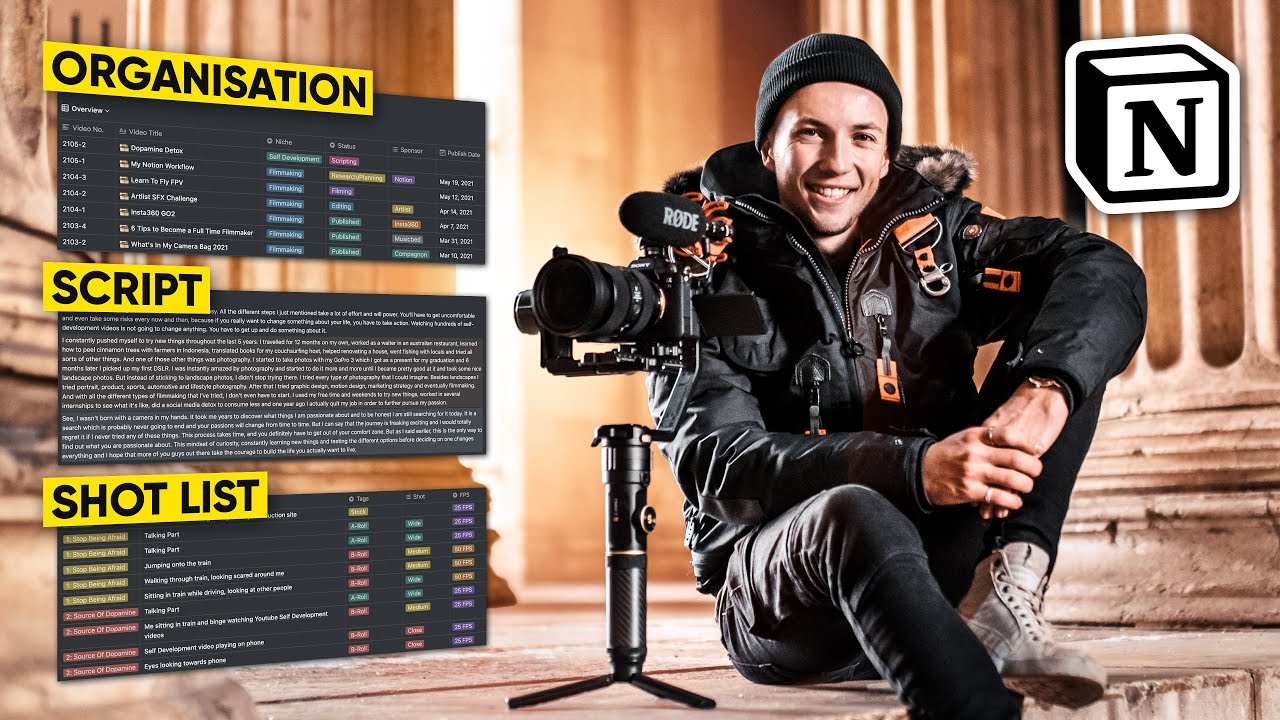 Niklas Christl
Niklas Christl
Adapting Scripts for Different Platforms and Formats
- Multi-platform publishing: 67% of marketers rank multi-platform publishing as their top priority (source.
- Different formats: 71% of online users prefer video content over other formats (source.
- Ads effectiveness: Videos are 12 times more likely to be shared than links and text combined (source.
Adapting Content for Various Platforms
Do's
- Adapt the title and description: Write a catchy title and compelling description, specific to the platform. Remember that each platform has different character limits for titles and descriptions, so adapt accordingly.
- Add platform-specific elements: Add calls-to-action, lower thirds, and other platform-specific features to your video to make it more engaging on that specific platform.
- Test multiple versions: Test multiple cuts and formats of your video to see which performs best on each platform.
Don'ts
- Don't repost without adapting: Simply reposting the same content without adapting it for the platform will often result in less engagement.
- Don't disregard copyright issues: Be aware of any music, visuals, and footage rights when adapting your content for various platforms. Familiarize yourself with YouTube copyright strike guidelines.
Adapting Content for Different Formats
Formats to Consider
- Short-form video: Short, engaging videos are great for platforms like TikTok, Instagram Reels, and YouTube Shorts. Focus on delivering quick, actionable tips or entertaining content.
- Long-form video: In-depth tutorials, interviews, or storytelling videos perform well on platforms like YouTube and Facebook Watch. Make sure to include multiple chapters and timestamps for easy navigation.
- Live streaming: Adapt your content for live streaming by adding interactive elements, such as polls, Q&A sessions, and live chat. Popular platforms for live streaming include YouTube, Facebook, and Twitch.
Best Practices for Adapting Content
- Focus on the core message: When adapting your content for different platforms and formats, it's important to maintain the script's core message.
- Adjust the pacing: The pacing of your video should match the format and platform. Short-form videos benefit from faster pacing, while long-form videos can be more relaxed.
- Use visuals strategically: Each format may require different visuals to support the content. Ensure visuals are easy to comprehend and don't compete with the script.
- Maintain consistency: Consistent branding, visuals, and tone will help your content stand out across platforms.
Scriptwriting Workflow and Organization
Developing a Scriptwriting Routine
Developing a scriptwriting routine is vital for any YouTube creator. It helps establish a consistent content schedule and enables the creator to prepare engaging videos for their audience. This section will cover the importance and benefits of a scriptwriting routine, various tools and resources to help in the process, and tips for staying organized and motivated throughout the scriptwriting journey.
- Consistency in content quality
- Better organization and planning
- More effective time management
- Improved workflow and efficiency
Steps to Develop a Scriptwriting Routine
- Determine your content schedule and deadlines.
- Allocate dedicated time for scriptwriting each day or week.
- Establish a creative environment to help you focus.
- Use tools and resources to improve organization and efficiency, such as Trello or Google Keep.
- Set short-term goals, like completing a script in X number of hours or days.
- Collaborate and seek feedback from peers to improve your scripts.
- Stay motivated and inspired by watching other successful YouTube creators and taking online courses to expand your scriptwriting knowledge.
Do's
- Develop a strong structure and outline for your script.
- Write in a conversational tone that resonates with your audience.
- Use visual aids, such as storyboards and thumbnails, to help you plan your videos.
- Prioritize and stay focused on your main points.
- Edit and revise your script multiple times before finalizing.
Don'ts
- Write long and complex sentences that complicate your message.
- Plagiarize content or violate copyright laws.
- Get stuck on writer's block; take breaks or change your environment to refresh your creativity.
- Overload your script with unnecessary information that could be distracting.
Maintaining Motivation and Inspiration for Scriptwriting
- Regularly watch and analyze how successful creators structure their scripts.
- Stay updated on industry trends through resources like YouTube newsletters.
- Join online communities, such as Reddit or Facebook groups, to collaborate and share ideas with other creators.
- Attend workshops, conferences, and events related to scriptwriting and content creation.
Scriptwriting Tools and Resources
- Scriptwriting software: Final Draft, Celtx, and WriterDuet
- Project management tools: Trello, Asana, and Google Keep
- Editing tools: Grammarly, Hemingway, and ProWritingAid
- Networking opportunities: YouTube collabs and local meet-ups
Organizing and storing scripts
Organizing and storing your scripts is crucial to maintaining an effective scriptwriting workflow. This section will discuss the best practices for organizing your scripts and storing them, helping you produce consistent and high-quality content for your YouTube channel.
Best Practices for Organizing Scripts
- Create a Folder Structure: Organize your scripts in a logical folder structure, categorizing them by project, date, or theme. This allows for easy navigation and locating specific scripts.
Project A ├── Script 1 ├── Script 2 └── Script 3 Project B ├── Script 1 ├── Script 2 └── Script 3
-
Use Consistent Naming Conventions: Use a consistent naming convention for your scripts, such as including the video title, project name, and/or date. This will help you quickly identify and differentiate between scripts.
-
Keep Track of Versions: Save different versions of your scripts, either by saving them as separate files or using version control tools such as Git. This allows you to track changes and revert to previous versions if necessary.
Best Practices for Storing Scripts
-
Local Storage: Store a local copy of your scripts on your computer or external hard drive. This provides easy access and editing capabilities for your scripts.
-
Cloud Storage: Use cloud storage services such as Google Drive, Dropbox, or OneDrive to store and backup your scripts. This ensures that your scripts are accessible from any device and are protected from data loss.
-
Collaboration Tools: If working with others, use collaboration tools like Google Docs or Microsoft Teams to share, comment, and edit scripts in real-time.
-
Tracking Progress: Utilize project management tools such as Trello, Asana, or Notion to maintain a clear overview of your scriptwriting workflow, helping you keep track of deadlines and progress on each script.
Do's
- Create a logical folder structure for organizing your scripts
- Maintain consistent naming conventions
- Keep track of version history
- Store scripts on both local and cloud storage
- Use collaboration tools when working with others
Don'ts
- Store scripts in multiple locations without proper organization
- Use inconsistent naming conventions
- Neglect to keep track of version history
- Rely solely on local storage without backups
Investing time in properly organizing and storing your scripts can streamline your scriptwriting workflow, making it easier to manage and execute your YouTube content strategy. By following these best practices, you'll maintain clear access to your scripts, increase efficiency, and ensure that your content remains high quality.
Storytelling Techniques for YouTube Content
- Applying the Three-Act Structure to YouTube videos
- Character development and audience connection
- Types of Humor to Use in Your Videos
- Using Emotional Appeals and Relatable Storylines


 HillierSmith
HillierSmith
Storytelling Techniques for YouTube Content
Applying the Three-Act Structure to YouTube videos
The traditional three-act structure is a fundamental storytelling technique that can be applied to YouTube videos to create engaging and compelling content for your viewers.
- Videos that follow the three-act structure tend to have higher audience retention rates.
- Viewers are more likely to share and interact with videos that follow this structure.
Application of the three-act structure in a YouTube video from YouTube_channel_ABC
Table Breakdown of the Three-Act Structure
| Act | Description | Estimated Video Duration |
|---|---|---|
| 1. Setup | Introduce the characters and context, establish the premise | 10 to 30% |
| 2. Confrontation | Introduce challenges and obstacles, build tension | 60% |
| 3. Resolution | Present the climax and resolve the conflict | 10 to 30% |
Dos
- Begin with a hook to grab the viewer's attention.
- Maintain a steady pace throughout your video.
- Engage your audience emotionally by building tension and creating anticipation.
- Ensure your climax is engaging and worth the wait.
- Conclude your video on a satisfactory note, resolving the conflict and providing closure.
Don'ts
- Don't lose track of your storyline and narrative.
- Don't add unnecessary details that can make the story too complex or confusing.
- Don't have a weak climax; it should be the most engaging part of your video.
YouTube Channel Retention Rate Comparison
comparison of audience retention rates on YouTube channels utilizing and not utilizing the three-act structure
To learn more about how to make YouTube videos and the various tools and resources that can help enhance your content, check out our online courses and educational resources.
Character development and audience connection
Building a strong connection with your audience on YouTube is essential for long-term success. To achieve this, focusing on character development can help create a personal bond between you and your viewers. In this section, we'll discuss various techniques for developing unique and relatable characters on YouTube that will capture audience attention and encourage viewer loyalty.
Vulnerability and authenticity
- Make mistakes and learn from them in front of your viewers.
- Share personal stories and experiences.
- Reveal your thought process behind the content you create.
Consistency and relatability
Consistency in your on-screen personality and messaging will make it easy for viewers to relate and resonate with your content. Some suggestions to achieve consistency include:
- Develop a unique style and stick to it.
- Keep messaging on-brand, even in collaborations.
- Engage with your audience on a regular basis via comments or social media.
Persona vs personality
A fine line exists between creating a character (persona) and staying true to your personality. A balance can be achieved by considering the following:
- Incorporate your true self into your character while boosting certain traits for entertainment or impact.
- Use catchphrases or actions that are true to you but amplified for your content.
- Make a clear distinction between your on-camera and off-camera self to maintain authenticity.
Develop characters through storytelling
Leveraging storytelling techniques can help you introduce and develop a character effectively. Consider the following tips:
- Establish a strong, unique character background or origin story.
- Use conflict or challenges to showcase character growth and development.
- Employ various story arcs to continually develop the character over time.
Involve your audience in character development
- Seek feedback from your viewers on how they’d like a character to develop.
- Use Q&A or interactive sessions to show audience involvement in character choices.
- Create polls or voting systems for viewers to decide on character choices or narrative direction.
By focusing on character development and audience connection, you can create engaging content that resonates with viewers long-term. To better understand the process of making successful YouTube videos, check out this resource on how to make YouTube videos.
Incorporating Humor and Wit into Your Storytelling
Humor and wit have long been successful tactics in storytelling. When applied to YouTube content, they can effectively engage audiences, keep viewers watching, and elicit positive responses. This section will guide you through incorporating humor and wit into your storytelling repertoire.
According to a study, a significant proportion of viral YouTube videos contain humor. By 2015, 55% of videos in Tubular Labs' top 500 videos ranking employed comedy as a central aspect. Understanding the common attributes of humor can help you in successfully applying it to your content.
Types of Humor to Use in Your Videos
There are several forms of humor that you can use to keep your content engaging and entertaining, including:
- Puns and wordplay: Make use of clever puns or wordplays that relate to the topic or theme of your video.
- Observational humor: This type of humor derives from the everyday, mundane situations, and often involves a commentary on society or cultural norms.
- Self-deprecation: Make light of your own shortcomings or inadequacies to create a relatable and likable persona for your audience.
- Visual gags: Use props, costumes, or unexpected visual elements to add a level of humor to your videos.
Do's
- Match your humor style to your target audience: Choose humor that resonates with your audience and aligns with your video's message.
- Test your jokes on friends or colleagues: Ensure that your comedy lands well by testing it on a trusted group of people before recording your video.
- Mix it up: Vary your comedic approaches (e.g., types of humor or timing) to keep content fresh and engaging.
Don'ts
-
Avoid controversial or offensive humor: Topics like politics, religion, and race can be divisive, and attempting humor in these areas can risk alienating viewers or sparking backlash.
-
Don't force humor that doesn't fit your personality or content: If humor doesn't come naturally to you or doesn't suit your subject matter, find other ways to make your content engaging and compelling.
-
Avoid excessive inside jokes that exclude viewers: Your audience should be able to understand and appreciate the humor without feeling left out.
-
Jacksfilms: Known for his wit and sarcasm, Jacksfilms incorporates humor throughout his content, including his popular series "YIAY" and "PMS."
-
Liza Koshy: Liza's high-energy personality and knack for observational humor engage her audience and keep them laughing.
-
Ryan George: Known for writing and acting in sketches for Screen Rant's "Pitch Meetings," Ryan delivers witty, self-aware humor to comic effect.
These creators offer valuable insights into how humor and wit can enhance your content. By studying their techniques, you can apply these elements to your videos and see improvements in your audience engagement and channel growth.
Incorporating humor and wit into your YouTube storytelling can help your content stand out, engage viewers, and foster a loyal audience. Experiment with different comedic styles, adhere to the do's and don'ts, and study successful creators to learn how to best implement humor in your content.
The Art of Visual Storytelling
Visual storytelling is a powerful tool for engaging audiences on YouTube. In this section, we will explore various techniques to create compelling and captivating content, helping you stand out in the crowded YouTube landscape.
Statistics on the Importance of Visual Storytelling
- Viewers retain 95% of a message when they watch it in a video, compared to 10% when reading it in text.
- Videos with a compelling story are more likely to be shared and have higher watch times.
- 64% of users are more likely to purchase a product online after watching a video.
Essential Elements of Visual Storytelling
- Characters: Well-developed characters add depth and personality to your videos. Focus on making your on-screen presence relatable and authentic.
- Conflict & Resolution: Introducing and resolving conflicts in your story adds tension and excitement, keeping viewers captivated.
- Visual Components: Use eye-catching visuals, including interesting camera angles, transitions, and captivating thumbnails, to enhance your story.
- Pacing: Maintain a consistent rhythm in your video, avoiding long pauses and slow moments that may lead to viewer drop-off.
- Emotion: Tap into your audience's emotions through storytelling. Happy, sad, or motivational stories evoke a response that keeps them engaged.
- Casey Neistat's vlogs and documentaries showcase powerful visual storytelling, driven by engaging narratives, creative visuals, and well-paced content.
- Philip DeFranco's news show utilizes strong visuals and well-timed delivery to convey complicated news stories in an engaging manner.
Do's:
- Invest in good quality equipment (camera, microphone, and lighting) to enhance the visual experience.
- Edit your videos for clarity, coherence, and pacing.
- Use royalty-free music and sound effects to add depth to your storytelling.
- Incorporate compelling visuals, such as b-roll, animations, or graphics, to support your narrative.
- Use audience feedback to improve your storytelling techniques.
Don'ts:
-
Overuse special effects or transitions, as they can distract from your story.
-
Rely solely on text or voiceover without incorporating engaging visuals.
-
Ignore the importance of good sound quality in storytelling.
-
Create content without a clear narrative structure.
-
YouTube Creator Academy's guide offers comprehensive resources on visual storytelling, including charts and visual aids.
-
Check out this comprehensive article on how to make YouTube videos for step-by-step guidance on creating visually compelling content.
By incorporating these visual storytelling techniques into your YouTube content, you can create engaging videos that captivate your audience and encourage them to share your content with others.
Using Emotional Appeals and Relatable Storylines
Creating emotionally appealing and relatable storylines is crucial for the success of your YouTube content. Emotional appeals have the power to inspire, move, and engage your audience. This, in turn, leads to increased viewer retention, watch time, and even growing your subscriber base. This section will provide you with the necessary tools and techniques to achieve this goal.
The Importance of Emotional Appeal in YouTube Content
##- #### Statistics
- Content with emotional appeal is shared 3x more on social media than content without emotion.
- Videos that evoke strong emotions have a 62% higher completion rate than those that don't.
##- #### Why it matters
- Emotional appeals and relatable storylines lead to stronger audience connections.
- It helps you to stand out from the competition by creating memorable content.
- Evoking emotion increases viewer engagement, leading to higher watch time and positive audience feedback.
Types of Emotional Appeals
Table: Types of Emotional Appeals
| Appeal Type | Emotion Targeted | Usage Tips |
|---|---|---|
| Inspirational | Hope, admiration | Share stories of triumph over adversity and success to inspire others to achieve their goals. |
| Humorous | Amusement | Use comedy and satire to entertain your audience and create humorous content. |
| Fear-based | Anxiety, fear | Highlight potential risks and hazards to help viewers make informed decisions. |
| Sadness | Sympathy, empathy | Share heartfelt stories and experiences to evoke empathy from your viewers. |
Creating and Implementing Emotional Storytelling
- Do share genuine and honest stories from your own experiences.
- Do use appropriate language, tone, and music to convey the desired emotion.
- Do include clear and concise calls-to-action in your videos to guide viewers on their emotional journey.
- Don't manipulate or exploit your viewers' emotions for personal gain or simply to increase view counts.
- Don't create content that promotes hate, discrimination, or harm to any individual or community.
- Draw My Life Videos: Sharing personal struggles and life experiences in a visually engaging way.
- Emotional Challenges: Encourage viewers to step outside their comfort zone and face their fears.
- Stories of Hope and Resilience: Share stories of individuals or communities overcoming adversity.
- A Day in the Life: Showcase a relatable day-to-day routine or activity to create a sense of familiarity with viewers.
Measuring the Success of Emotional Storytelling
Table: Performance Indicators for Emotional Storytelling
| Indicator | Description |
|---|---|
| Watch Time | Amount of time viewers spend watching a video, indicating level of engagement. |
| Audience Retention | Measuring how long viewers continue watching a video, revealing how engaging the content is. |
| Likes and Dislikes | Monitor the ratio of likes to dislikes to gauge viewer satisfaction. |
| Comments | Content that evokes strong emotions encourages viewers to share their thoughts and opinions. |
Resources and Tools for Enhancing Emotional Storytelling
- How to Make YouTube Videos - Learn video production techniques and storytelling methods to create engaging YouTube content.
- Copyright-Free Music and Sound Effects - Enhance your videos with the appropriate audio to evoke the desired emotion.
- Scriptwriting and Storytelling Techniques - Refine your storytelling skills to make your YouTube content more powerful and emotionally engaging.
Storytelling Techniques in YouTube Content
- Do's
- Don'ts
- Incorporating storytelling in different video formats
- Types of scripts for different video formats


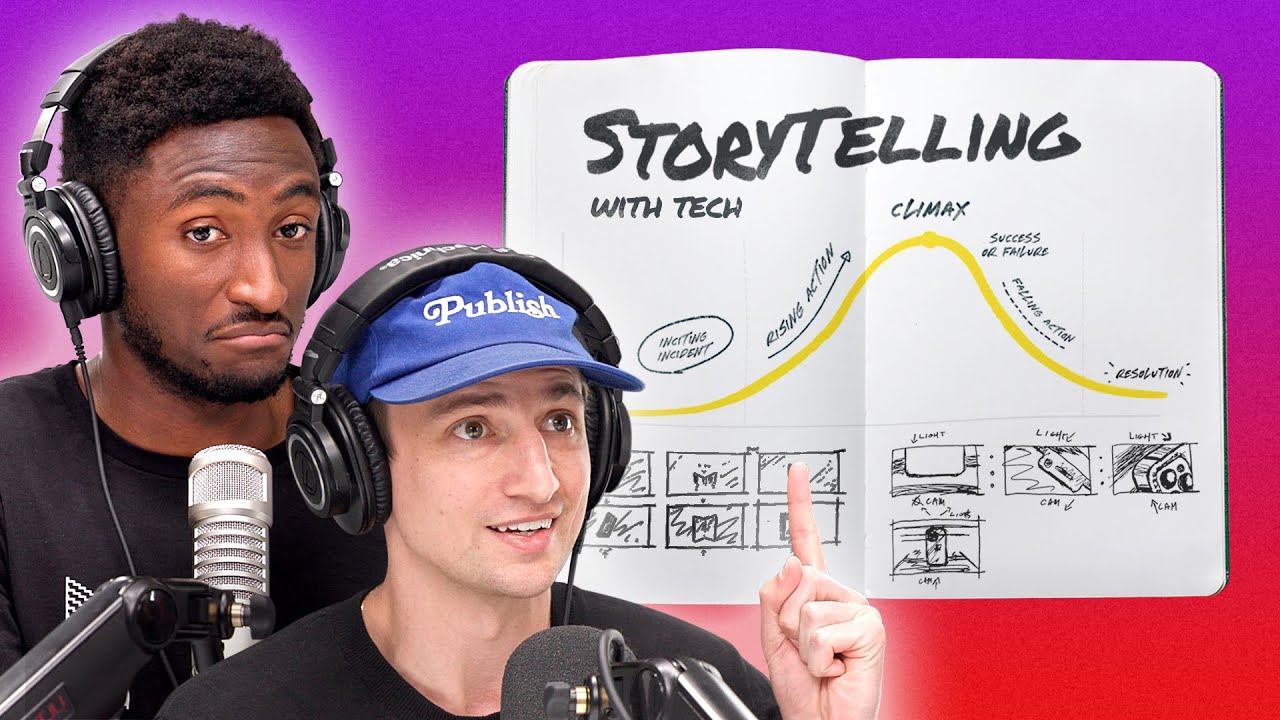 Waveform Clips
Waveform Clips
Storytelling Techniques in YouTube Content
Importance of storytelling in video content
In the world of YouTube, storytelling holds significant importance as it can captivate and retain the audience's interest, resulting in higher viewer retention rates and increased watch time. Studies have shown that videos with a strong storyline can increase viewer engagement by up to 520%, with a 300% boost in conversion rates.
- Videos with a storyline can increase viewer engagement by up to 520%.
- The average viewer watch time doubles when there's an engaging story.
- Videos with storytelling elements are 22 times more likely to be shared than other content.
Table: Storytelling vs. Non-Storytelling Videos
| Metric | Storytelling Videos | Non-Storytelling Videos |
|---|---|---|
| Viewer Engagement | 520% | 100% |
| Conversion Rate | 300% | 100% |
| Average View Time | 2x | 1x |
| Shareability (22 times higher) | ✔ | ✘ |
- Hero's Journey: A protagonist overcomes challenges to reach a goal.
- Personal Experiences: Sharing events from one's life, making the video relatable.
- Behind-the-scenes: Show the process of creating content, products, or experiences.
- Challenge or Experiment: Present a challenge or experiment, illustrating the outcome.
Do's
- Use captivating thumbnails and titles to hook the viewer.
- Structure the video with a beginning, middle, and end.
- Incorporate emotions, humor, and conflict to keep viewers engaged.
- Use visuals, animations, and sound effects to boost the story's impact.
- Keep the story authentic, relatable, and genuine.
Don'ts
- Overuse clichés or recycled storylines.
- Use misleading clickbait or thumbnails.
- Rush the story; let it evolve naturally.
- Create monotone, dull content.
- Overload the story with unnecessary details.
Chart: Viewer Retention Rate by Storytelling Techniques
For more insights into creating engaging YouTube content, refer to this guide on how to make YouTube videos.
Incorporating storytelling in different video formats
How Different Video Formats Affect Storytelling
Different video formats can alter your storytelling approach and improve engagement with your audience. Here is a list of common video formats and how they impact storytelling:
- Interviews: Interviews provide a conversational tone, allowing viewers to learn more about the interviewee's personality and experiences.
- Tutorials: Tutorials are step-by-step guides on how to do something, enabling the viewer to follow along and learn a new skill.
- Vlogs: Vlogs intimately share personal experiences and stories, giving viewers a glimpse into the creator's life.
- Webinars: Webinars are educational, featuring experts in a field who provide information and insights while answering audience questions.
- Animation: Animation creatively tells stories through visuals and can simplify complex topics or illustrate abstract concepts.
- Documentary: Documentary-style videos present a topic in-depth, incorporating research, interviews, and real-life footage.
- Reviews: Reviews use storytelling to analyze a product or service, sharing the creator's experiences and opinions with the audience.
Statistics show that incorporating storytelling in YouTube videos can increase viewer engagement, watch time, and shares. Some key stats include:
- 92% of consumers want brands to create ads that feel like a story[source]
- Videos that tell a story are shared 22 times more often than those that don't [source]
- Stories that evoke emotions can increase a video's engagement by 3 times[source]
Using Visuals and Audio to Enhance Storytelling
Enhancing your video content with visuals and audio can improve the impact of your storytelling. Consider these tips:
-
Use B-roll footage to give context or visually emphasize key points in the story
-
Include charts and graphs to visually represent data and statistics
-
Use background music to set the tone and pace of the story
-
Incorporate sound effects to create atmosphere and build tension
-
Casey Neistat - vlogs that share experiences and stories from his life
-
TEDx Talks - webinars featuring experts sharing stories and insights
-
Kurzgesagt – In a Nutshell - animations that simplify complex topics or illustrate abstract concepts
Remember, storytelling is an essential part of creating engaging YouTube content. Understanding how to incorporate storytelling into different video formats can significantly improve your audience's connection to your videos. To learn more about creating video content, check out our guide on how to make YouTube videos.


 Channel Makers
Channel Makers
- Understanding YouTube Scriptwriting
The significance of scripts in YouTube content creation
Scriptwriting plays a crucial role in the process of creating videos for YouTube. It is essential for delivering engaging content to attract and maintain an audience. Crafting an effective script ensures a well-structured and informative video that communicates the desired message.
-
43% of viewers stop watching a video because the story lacks a clear or compelling structure. (Source: HubSpot)
-
80% of users lose interest in a video if the content is not engaging within the first 10-20 seconds. (Source: Forbes)
-
Link to a video with strong script by a popular YouTuber showcasing concise storytelling and clear structure.
-
An image of a script sample showing the story structure and elements.
-
Table 1: A comparison of average watch time for scripted vs. non-scripted videos.
-
List of best practices for improving scripts:
- Engage the audience from the start.
- Use a clear structure and format.
- Maintain a focused message.
- Use strong, emotive language.
- Keep it concise and avoid information overload.
Do's:
- Research and plan before writing your script.
- Personalize the script to make it relatable.
- Stay consistent with your brand message and tone.
- Edit and revise your script multiple times.
Don'ts:
- Overload your script with too many ideas or messages.
- Go off-topic or include irrelevant information.
- Use complex language or jargon.
- Rely solely on visuals without a clear story or message.
- Chart illustrating the correlation between well-structured scripts and video performance metrics, such as audience retention and watch time.
In addition to honing scriptwriting skills, YouTubers should seek resources to improve their content creation process. One valuable resource is a comprehensive list of how to make YouTube videos, where creators can explore various aspects of YouTube content creation and sharpen their skills in pre-production, production, and post-production.
Types of scripts for different video formats
Vlogs
Vlogs are personal, candid, and often unscripted, giving the audience a glimpse into the creator's life and thoughts. However, having a loose script can ensure your vlog is structured and engaging.
- Stats: Vlogs account for 4.7% of YouTube content (source: Tubics
- Do's: Share personal stories, maintain a conversational tone, and plan the main topics beforehand
- Don'ts: Over-script your vlog or sound too formal
Tutorials and How-to's
Tutorials and how-to videos aim to teach the audience new skills, tips, or techniques. A well-structured and detailed script is crucial for these videos.
- Stats: Tutorials make up 5.1% of YouTube content (source: Tubics
- Do's: Plan each step in detail, use clear language, and include visuals or demonstrations
- Don'ts: Skip essential steps or assume prior knowledge from viewers
Product Reviews and Unboxings
These videos provide viewers with information and opinions on specific products. A thorough and unbiased script will help maintain credibility.
- Stats: Product reviews make up 3.9% of YouTube content (source: Tubics
- Do's: Research the product, list pros and cons, and share personal experiences
- Don'ts: Provide misinformation or drastically over/under-exaggerate the product's qualities
Listicles
Listicles are videos that feature a list of items, such as "Top 10" or "5 Best." A well-organized and engaging script is vital for a captivating listicle.
- Stats: Listicles account for 2.1% of YouTube content (source: Tubics
- Do's: Research thoroughly, rank items, and share interesting facts about each entry
- Don'ts: Provide an unordered list or make erroneous claims
Documentary and Educational Videos
These videos aim to educate viewers on various subjects. A well-researched and eloquent script is required to maintain credibility and clearly convey information.
- Stats: Educational content makes up 6.3% of YouTube content (source: Tubics
- Do's: Research extensively, use reputable sources, and present information in a digestible manner
- Don'ts: Spread misinformation or adopt a biased perspective
To further develop your scriptwriting skills, consider exploring how to write a YouTube script. Additionally, utilizing the best tools for YouTube creators can help you refine your scripts and overall video production.
Writing Effective Video Scripts
- ** Incorporating the Right Amount of Information and Entertainment**
- ** Tips for Balancing Information and Entertainment in Your Video Scripts**
- ** Case Studies Balanced YouTube Content**
- Importance of a Structured Script
- Elements of a Structured YouTube Script
- Tips for Creating a Structured YouTube Script
- Common Scripting Mistakes to Avoid
- Techniques for writing engaging video scripts
- Writing Dialogue, Narration, and Voiceovers
- ** Writing Strong Hooks and Attention Grabbers**


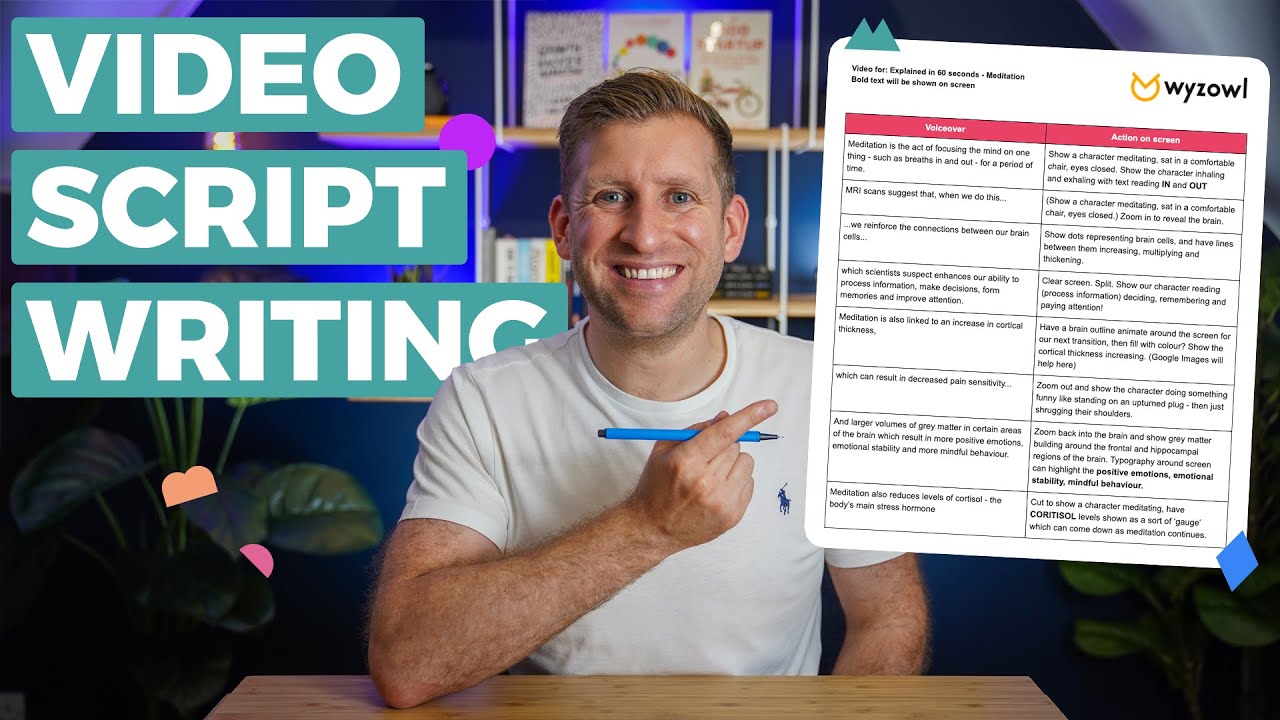 Matt Byrom
Matt Byrom
# Balancing Information and Entertainment
When creating content for YouTube, one of the most important elements to consider is how to balance information and entertainment. Achieving the right mix can result in higher viewer engagement, longer watch times, and improved audience retention. In this section, we will discuss the key aspects of how to strike the perfect balance in your video scripts.
Different types of content fall along a broad spectrum between being strictly informative (e.g., tutorials) and pure entertainment (e.g., comedy skits). It's essential to identify your video's position on this spectrum, as it will guide your scriptwriting process.
** Incorporating the Right Amount of Information and Entertainment**
Depending on your content, you may want to lean more heavily towards one end of the spectrum or strike a perfect balance between the two. Consider the following steps to determine the appropriate mix for your video script:
-
Establish your video's purpose: Ensure that your script matches the video's ultimate goal. For instance, product review videos should offer accurate, helpful information about the item, but could also be made more engaging with entertaining delivery or interesting visuals.
-
Avoid overloading or diluting your content: Overloading a script with too much information can overwhelm viewers and reduce retention, while overly prioritizing entertainment can dilute your script's primary message. Strive for the appropriate balance based on your content and audience's needs.
-
Test and refine: Pay attention to audience feedback and metrics (such as watch time and viewer retention) to make informed decisions when adjusting the balance between information and entertainment in future video scripts.
** Tips for Balancing Information and Entertainment in Your Video Scripts**
Do's
- Provide clear, concise, and accurate information without making it feel like a lecture.
- Engage your audience using humor, storytelling, anecdotes, or visual elements.
- Break down complex topics into digestible segments.
Don'ts
- Overload your script with irrelevant information that distracts from the primary message.
- Rely solely on entertainment at the expense of useful or meaningful content.
- Be condescending or overly academic in your explanations.
- Neglect viewer feedback and engagement metrics, which can provide valuable insights into what's working and what's not.
** Case Studies Balanced YouTube Content**
- SciShow: This popular science channel combines informative content with humor and engaging visuals, striking a good balance between information and entertainment.
- Thomas Frank: As an educational YouTuber, Thomas Frank provides actionable advice on productivity, study habits, and personal development while incorporating humor and relatable personal experiences.
- Adam Savage’s Tested: This channel delves into various topics, from tech reviews to pop culture, using a blend of informative content, engaging storytelling, and fun visuals.
Would you like to learn more about YouTube content creation? Check out our guide on how to make YouTube videos.
Structuring a YouTube script
Importance of a Structured Script
A well-structured script is crucial for creating engaging and professional YouTube videos. It helps you present information clearly, maintain viewer interest, and increase your retention rate throughout the video. Furthermore, a well-planned script can save you time during production and editing by ensuring you have all the necessary shots and dialogues before you start recording.
Elements of a Structured YouTube Script
-
Introduction: This is the first few seconds of your video where you quickly introduce the topic and yourself. Give viewers a reason to continue watching by briefly mentioning the key points or value they'll gain from the video.
-
Hook: The hook should be included right after the introduction, ideally within the first 30 seconds of the video. It's a powerful statement or question that piques interest and convinces viewers to keep watching.
-
Body or Main Content: This is the main portion of your video where you delve into the topic in detail. Break the content down into digestible sections, and maintain a logical flow of information. Use visual aids such as tables, images, and charts to support your points and keep viewers engaged.
-
Transitions: Smooth transitions between different sections of your video keep viewers focused and maintain the flow of information. You can use animation, sound effects, or even simple crossfades to transition from one segment to another.
-
End Screen: Use YouTube's end screen feature to promote another video on your channel, ask viewers to subscribe, or direct them to an external link.
Tips for Creating a Structured YouTube Script
-
Write conversationally, as if you were speaking directly to a friend. Avoid using overly complex language and jargon, unless it's necessary for your target audience.
-
Maintain a consistent tone throughout the video. If your content is educational, be informative and concise; if it's entertainment-based, be engaging and energetic.
-
Time your script. Ensuring your video is neither too short nor too long is crucial to increasing watch time and maintaining viewer interest. While there's no perfect length for all videos, aim for a duration that aligns with your channel's brand and target audience.
-
Storyboard your script to help visualize the video's layout and content before production. This can help identify any gaps in the narrative or issues with the flow of information.
-
Edit and revise your script multiple times. Refinement is essential for a polished and professional final product.
Common Scripting Mistakes to Avoid
-
Lack of focus: Ensure your script has a clear purpose and sticks to the topic. Avoid meandering or digressing too far from the central theme.
-
Overloading information: Bombarding viewers with too much information can be overwhelming and can cause them to lose interest. Stick to the main points, and save additional details for related videos or external resources.
-
Ignoring audience needs: Remember who you are creating content for and tailor your script to their interests, knowledge level, and expectations. Monitor viewer feedback to continuously hone your scripting approach.
With these tips in mind, you'll be well on your way to creating structured and engaging YouTube video scripts. To further refine your scriptwriting skills, explore resources like "how to write a youtube script"and practice by studying the scripts of successful YouTube creators in your niche.
Writing Effective Video Scripts
Techniques for writing engaging video scripts
In writing engaging video scripts for Youtube, it's vital to know and utilize a variety of techniques. These not only keep your audience hooked, but also convey your message clearly and concisely.
Understand your audience
Story Structure
Be Authentic
Audiences appreciate originality and authenticity. Let your personality shine through your content, and make sure it aligns with your brand's overall image.
Direct Call-to-Action
Give your audience a clear call-to-action at the end of your video. This stimulates engagement and gets viewers to take the action you want them to.
Utilize Visual Support
Add supporting images or videos to strengthen your message. This also helps the audience to better grasp the narrative. Make sure to use stock video footage that is relevant to your topic.
Implement Keywords
Incorporate keywords for YouTube to improve the visibility of your videos and rank better on the platform.
Review and Edit
Finally, review and edit your script to make sure there are no errors and that the message is clear. This also includes evaluating your script for length, as viewers often don't have the attention span for long, drawn-out content. Consider using a YouTube video editor to streamline your editing process.
Writing engaging scripts is just one part of a content creator's journey. Other aspects such as understanding copyright laws, dealing with negative feedback, creating a content strategy, and more, all play an integral part in your YouTube journey. By mastering these techniques, you will be well on your way to creating quality content that resonates and engrosses your audience.
Writing Dialogue, Narration, and Voiceovers
Creating engaging content on YouTube requires not just visuals, but also effective dialogue, narration, and voiceovers. Considered as the backbone of any video, these elements play a critical role in conveying the theme of your content.
Dialogue
Constructing compelling dialogue incites a direct interaction with your audience. Dialogues should be brief and straight to the point, avoiding jargon or complex terminologies. Practice your dialogues, perfecting the tone and rhythm, to ensure they feel natural and authentic.
Narration
Narrations guide your audience throughout the video. To develop a compelling narration, it's essential to understand storytelling techniques. Knowing how to write a YouTube script can significantly impact the overall quality of your video.
Voiceovers
Voiceovers add an extra layer of information to your visual content. Being a separate layer, the voiceover should compliment the material shown on-screen. Clear articulation, correct tone, and pace are vital to maintain the interest of your viewers.
Technical Aspects
Although your dialogue, narration, and voiceover may be well-written, the delivery is equally, if not more, vital. Ensure the audio quality is crisp and clear, without any background noise. Consider investing in a good microphone and include some light background music to improve viewer retention.
By meticulously developing these aspects, you can significantly improve the quality of your YouTube content and enhance your engagement with the audience.
Remember, these are just tools to be used creatively - the magic happens in the way you wield them. For more tips and tricks on YouTube videos editing, consider checking out this curated list of YouTube video editor tools.
** Writing Strong Hooks and Attention Grabbers**
The online environment is a constant battle for attention. With so many distractions, getting your audience to focus on your content is no easy task. A good starting point for winning the war for attention is by creating a powerful hook.
Why Hooks Matter in YouTube Videos
A hook is a brief introductory statement or action designed to grab viewers' attention and keep them watching. In YouTube videos, hooks are crucial for a few reasons:
- Viewer retention: A strong hook makes viewers more likely to watch until the end of your video. This is important because the algorithm prioritizes videos with high engagement, including viewer retention. In fact, videos with a higher average view duration are more likely to be promoted by YouTube .
- Audience loyalty: Viewers who are captivated by your content tend to return for more. Effective hooks turn casual viewers into loyal subscribers.
- SEO benefits: Longer watch times and engagement signals help boost your video's SEO, making it more visible in search results and related videos.
Components of a Strong Hook
To create an effective hook, consider incorporating these elements:
Here are some do's and don'ts for creating a powerful hook:
Do:
Keep it short and sweet. Use compelling language and emotion to engage viewers. Be specific about the value your video provides.
Don't:
Mislead or overpromise in your hook. Always deliver what you promise. Use generic phrases or statements that don't add any value. Take too long to get to the point.
- Educational video: "Tired of feeling lost with Excel? Stick around as I show you 10 essential shortcuts that will save you hours of work and frustration."
- Tutorial: "Welcome! In the next 15 minutes, you'll learn how to plant and grow beautiful roses in your backyard – and trust me, even if you think you've got a black thumb, you can do it!"
- Product review: "If you're searching for the perfect pair of running shoes, wait till you see the features I discovered in this new model that'll blow your mind."
By employing strong hooks and attention grabbers in your YouTube videos, you'll hold your viewers' interest and increase engagement. For more tips on creating content for YouTube, check out our guide on how to make YouTube videos.
Looking for Brand Deals or Channel Strategy?
We run a platform for brand deals and an agency, helping creators derive maximum value from their content, while offering brands access to unparalleled, best-in-class research.
For Creators
- Strategic Brand Connections
- Outreach to Old Sponsors
- Platform to Manage Brand Deals
- View-Based Contract Negotiation
- Comprehensive Channel Strategy
- Channel/Thumbnail Optimization
For Brands
- Tools to Shortlist Creators
- Targeted Creator Outreach
- Detailed Sponsorship Reports on Existing Brands
- Platform to Manage Creator Deals
- View-Based Deal Facilitation
For Creators
- Strategic Brand Connections
- Outreach to Old Sponsors
- Platform to Manage Brand Deals
- View-Based Contract Negotiation
- Comprehensive Channel Strategy
- Channel/Thumbnail Optimization
For Brands
- Tools to Shortlist Creators
- Targeted Creator Outreach
- Detailed Sponsorship Reports on Existing Brands
- Platform to Manage Creator Deals
- View-Based Deal Facilitation
Apply to work with us or email [email protected]


Table of Contents
Work with us